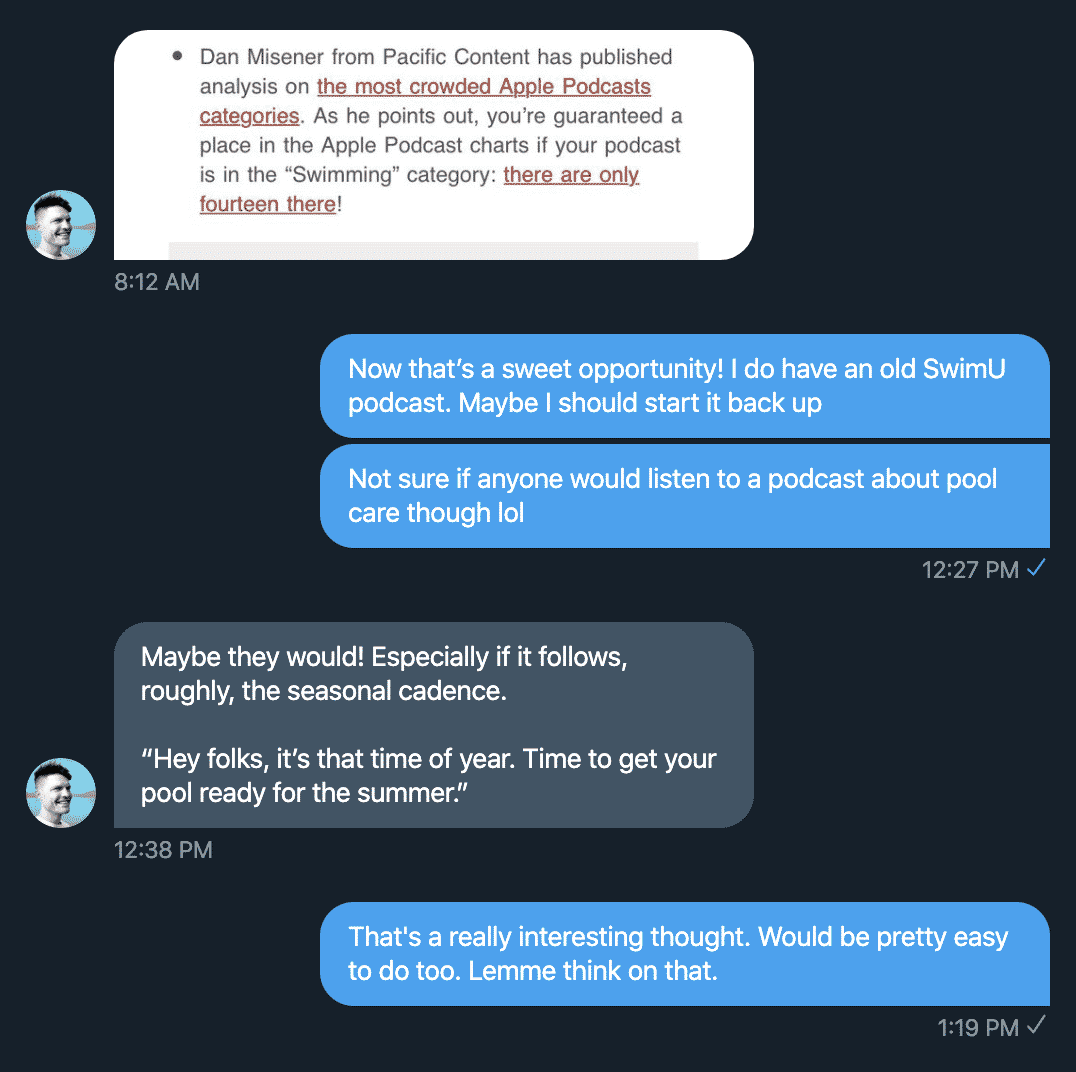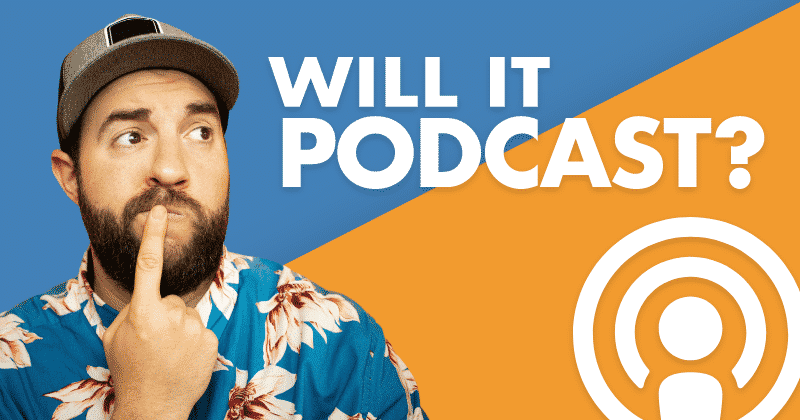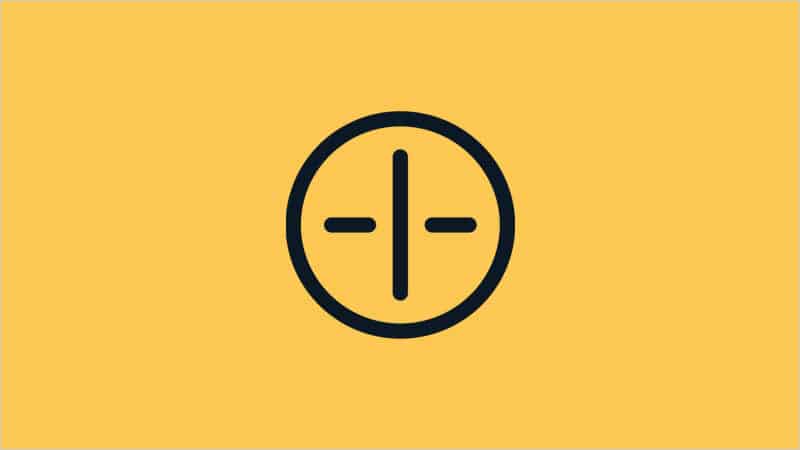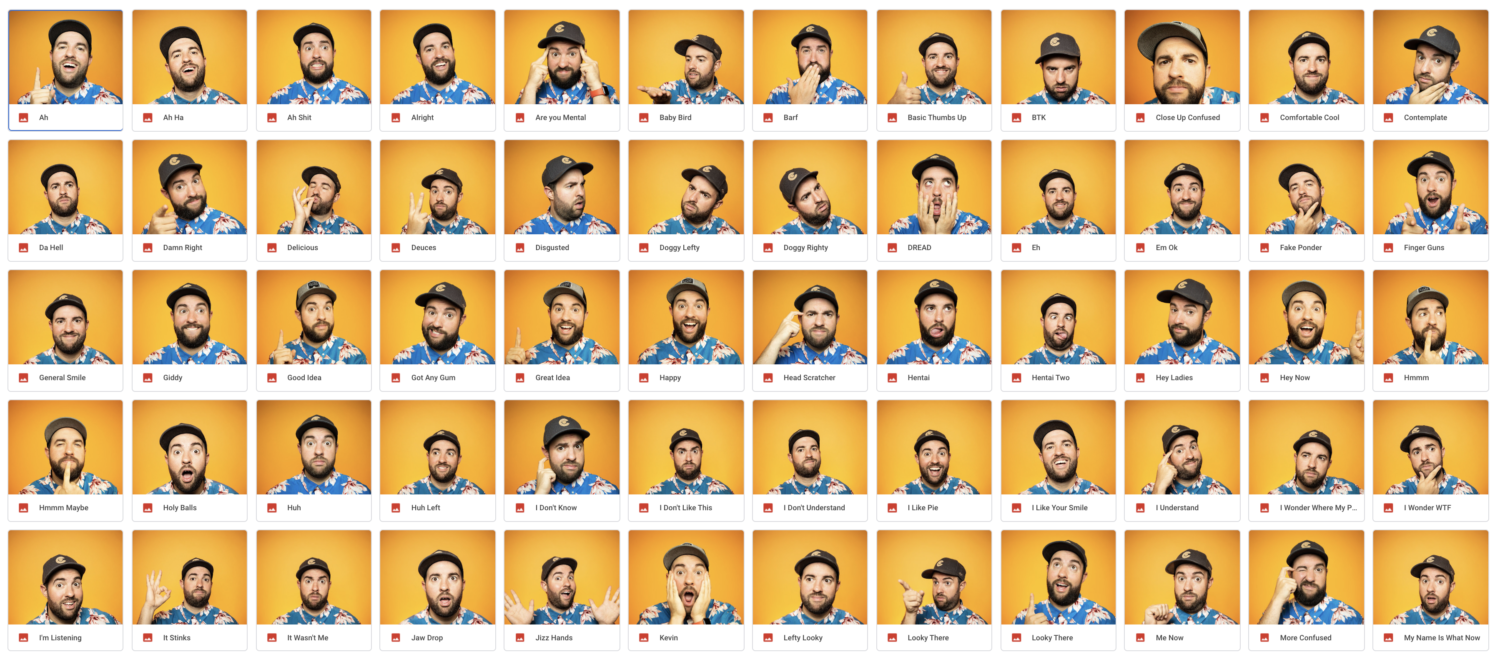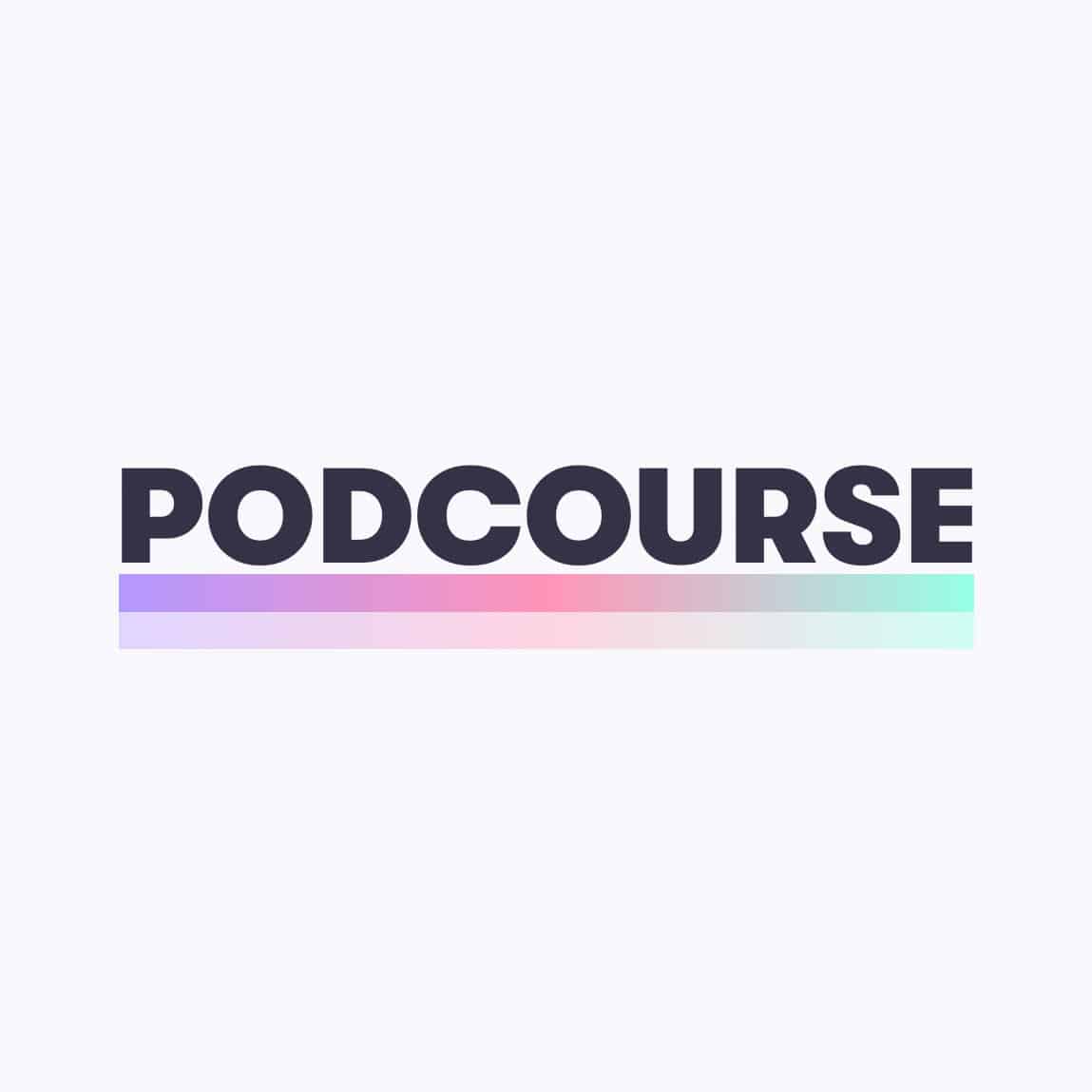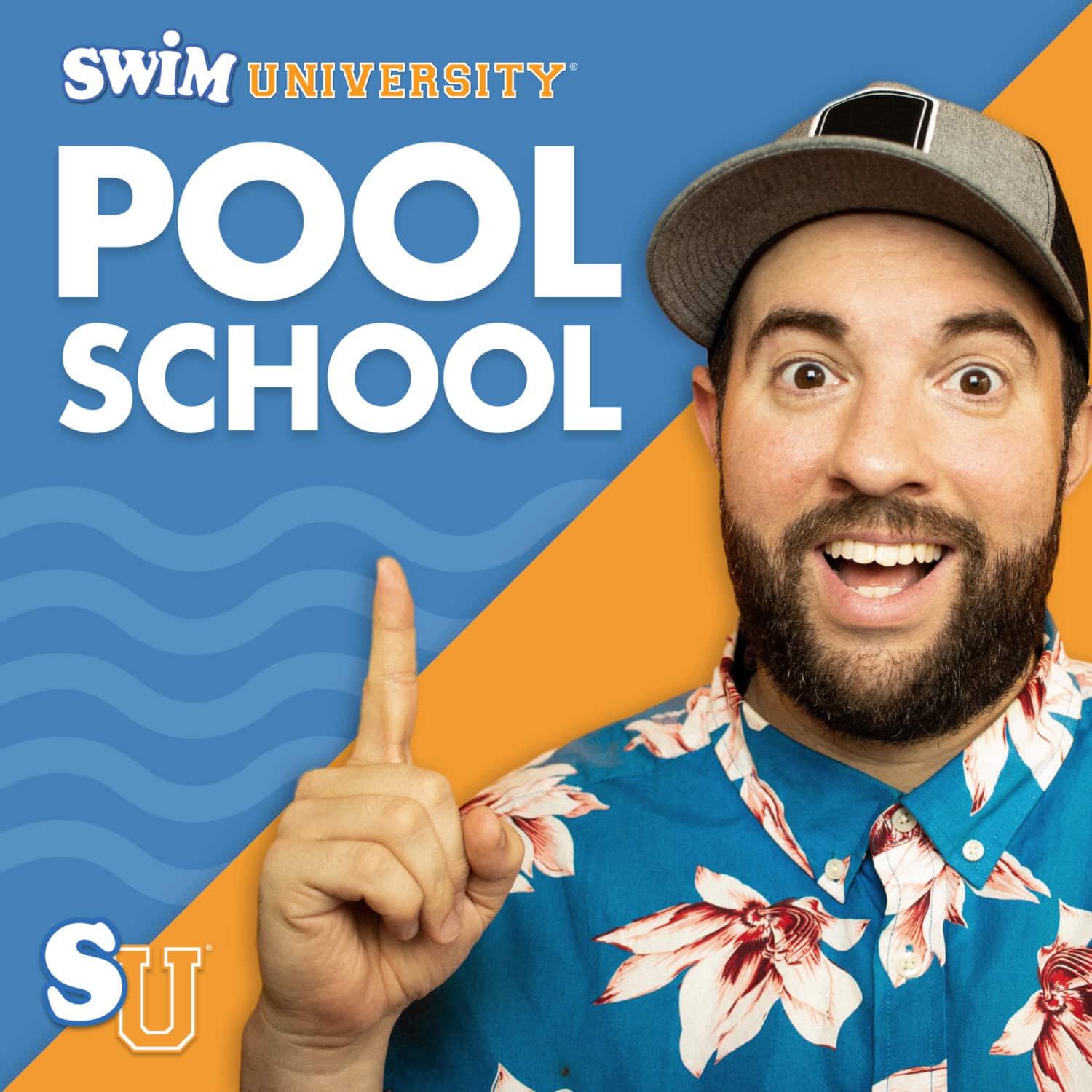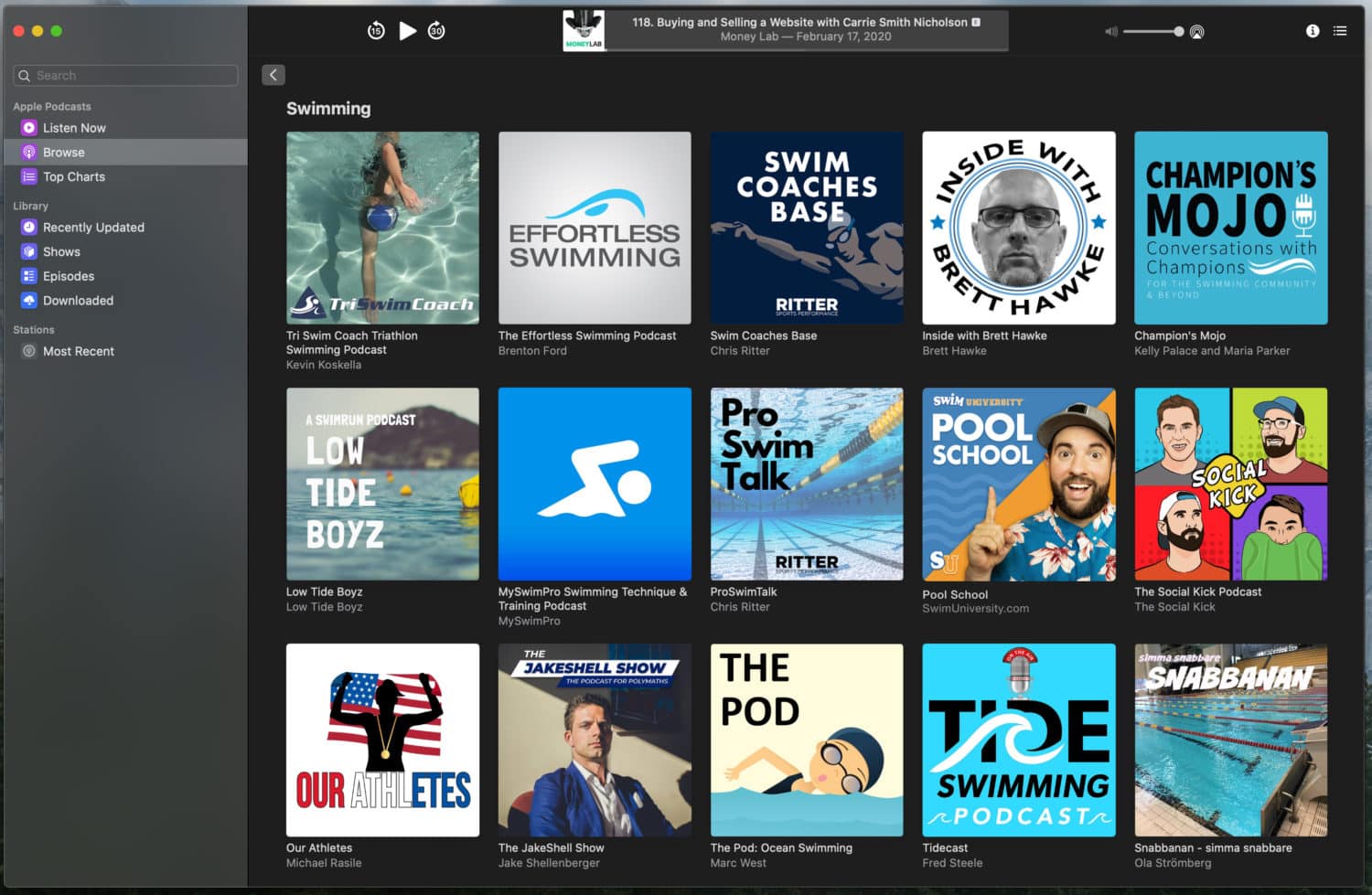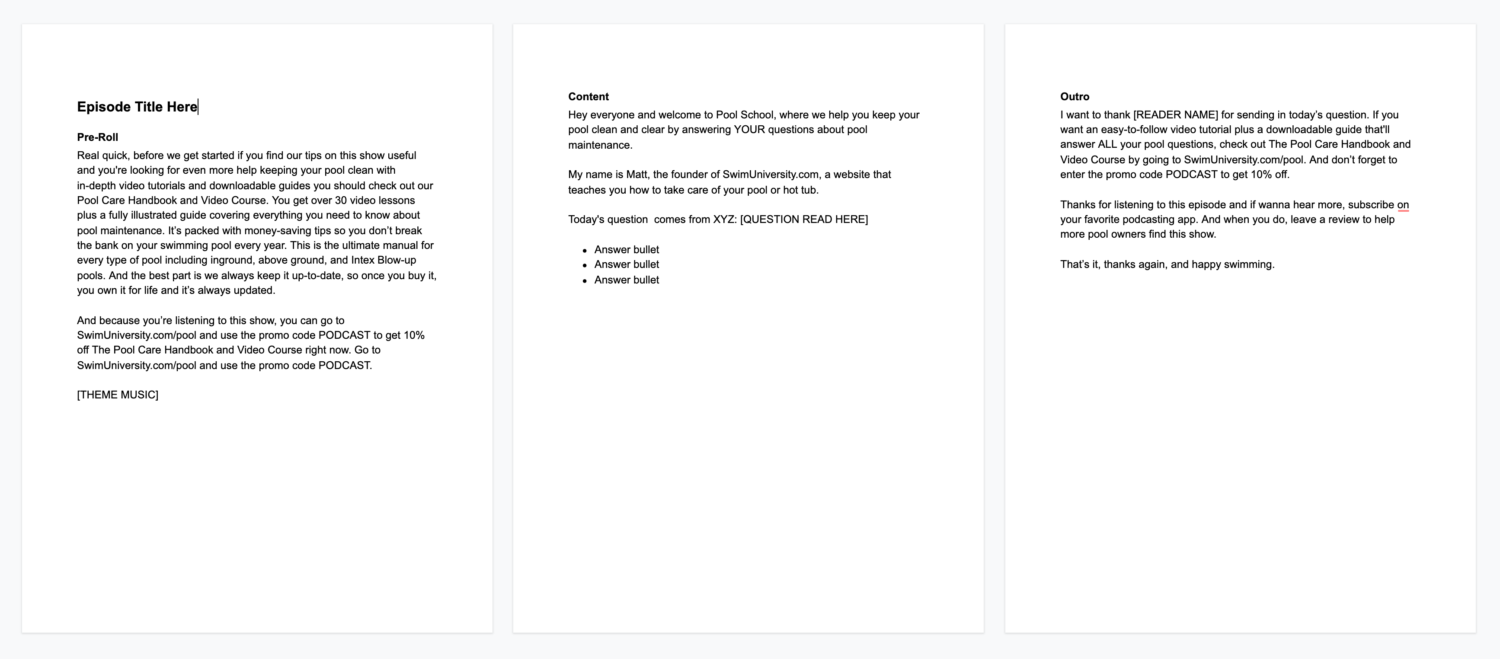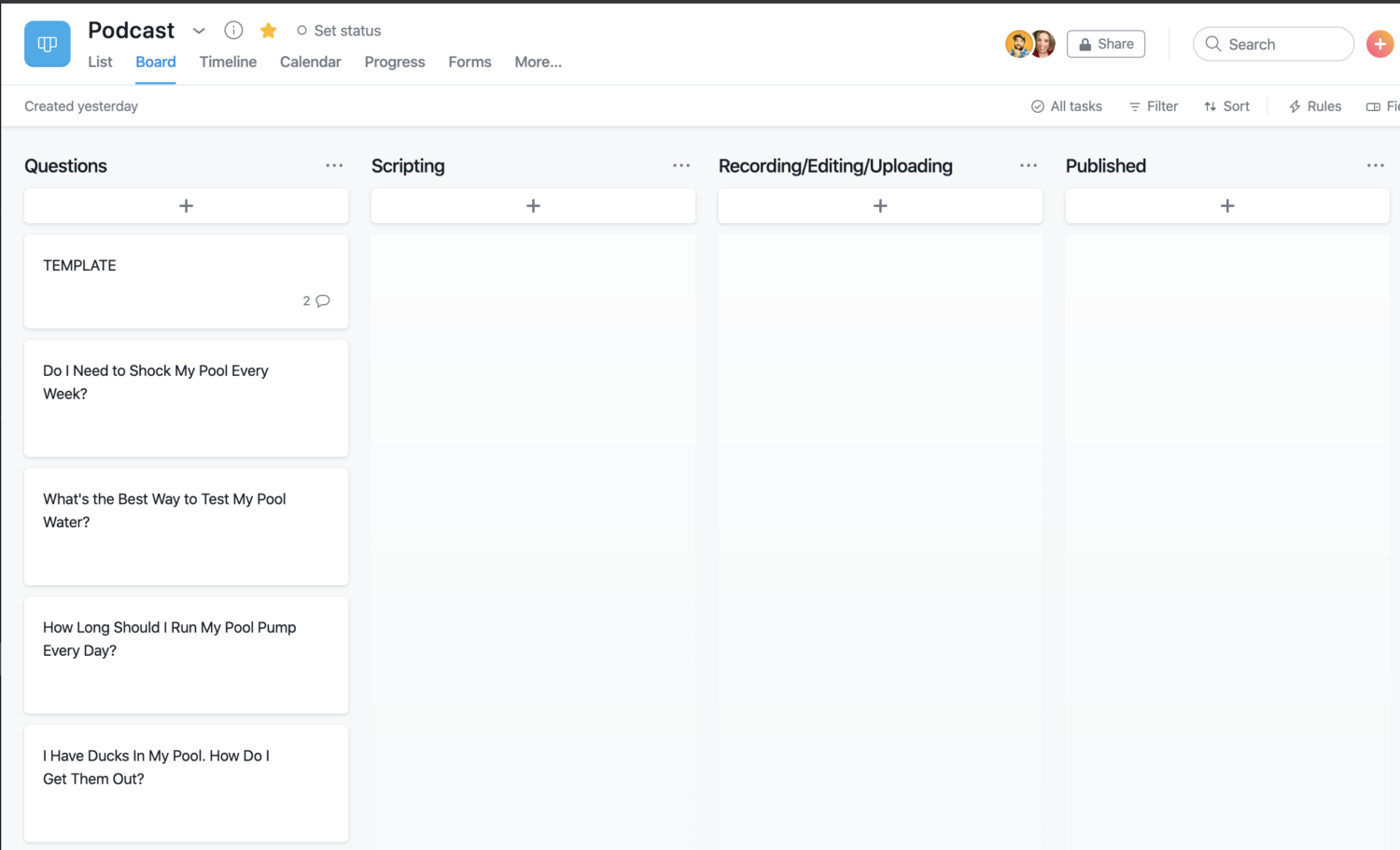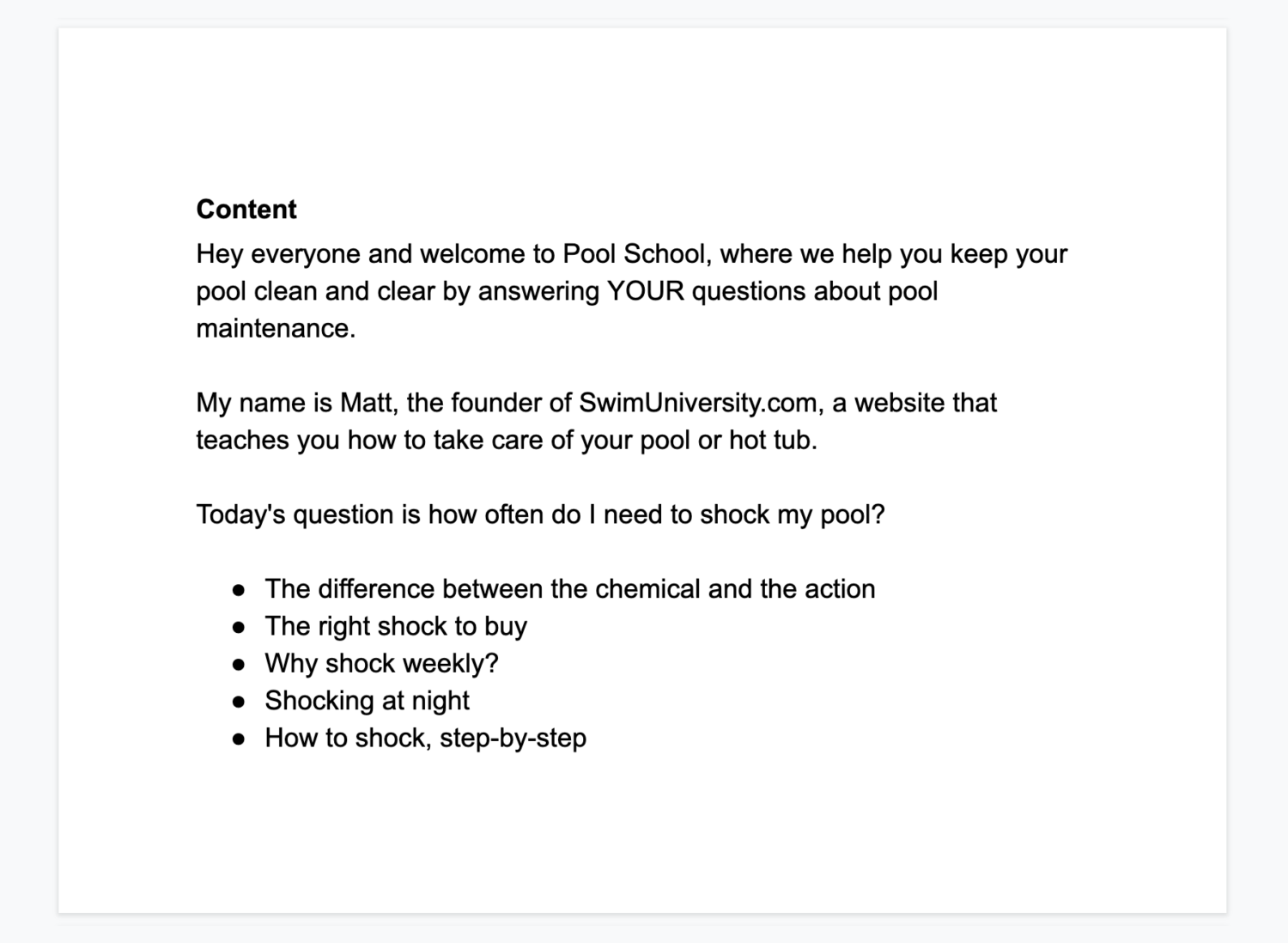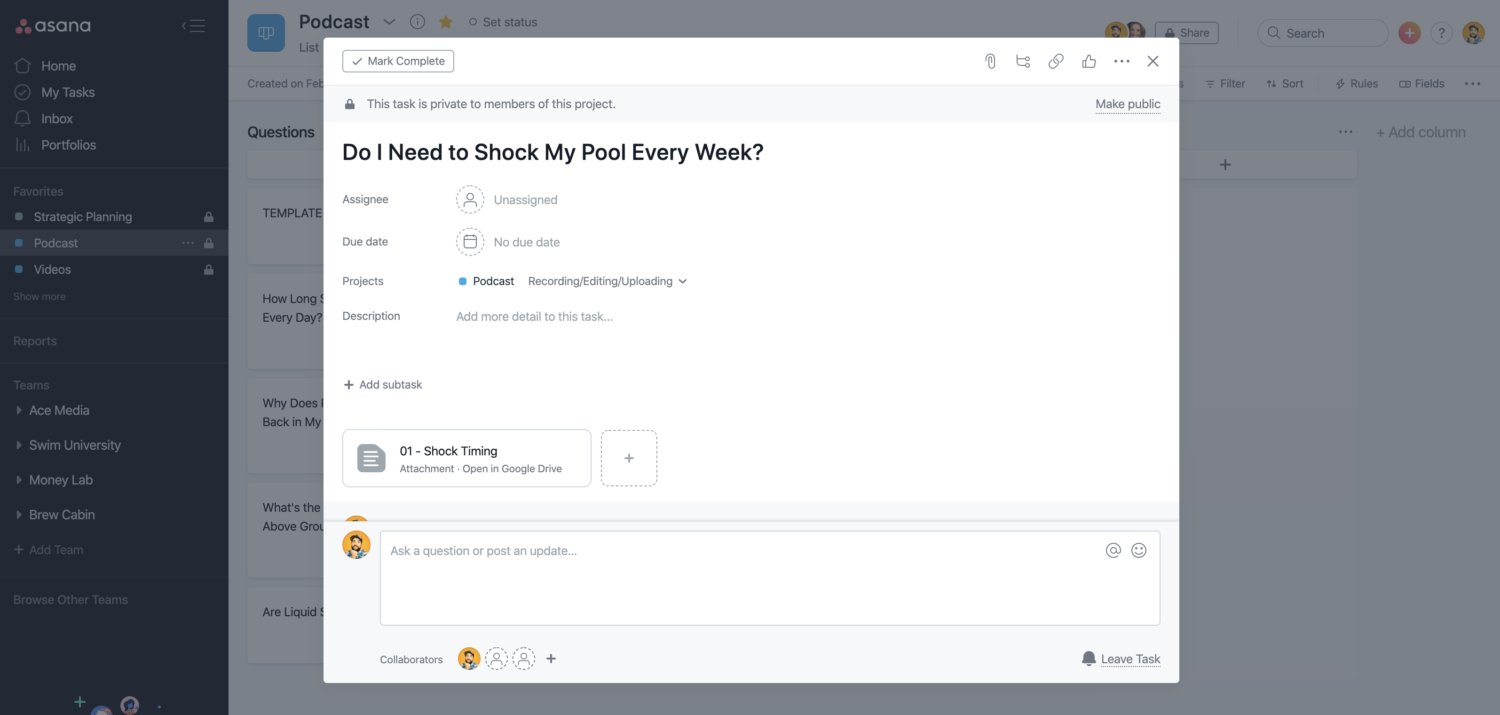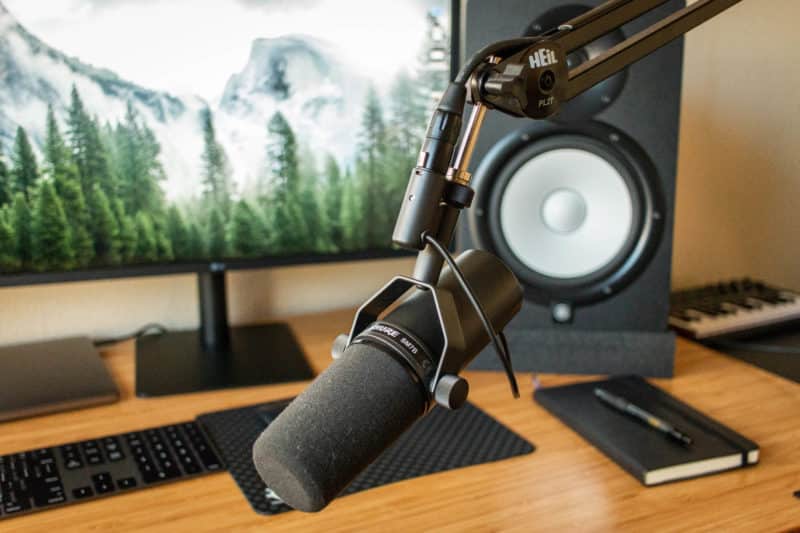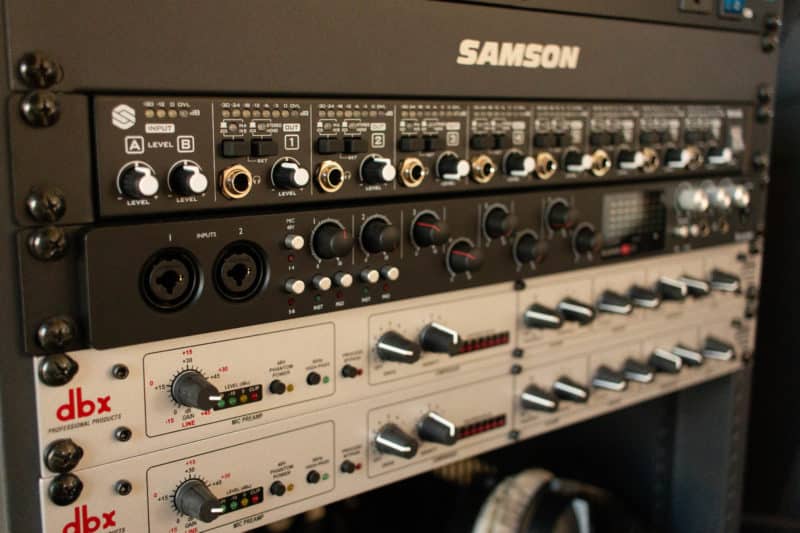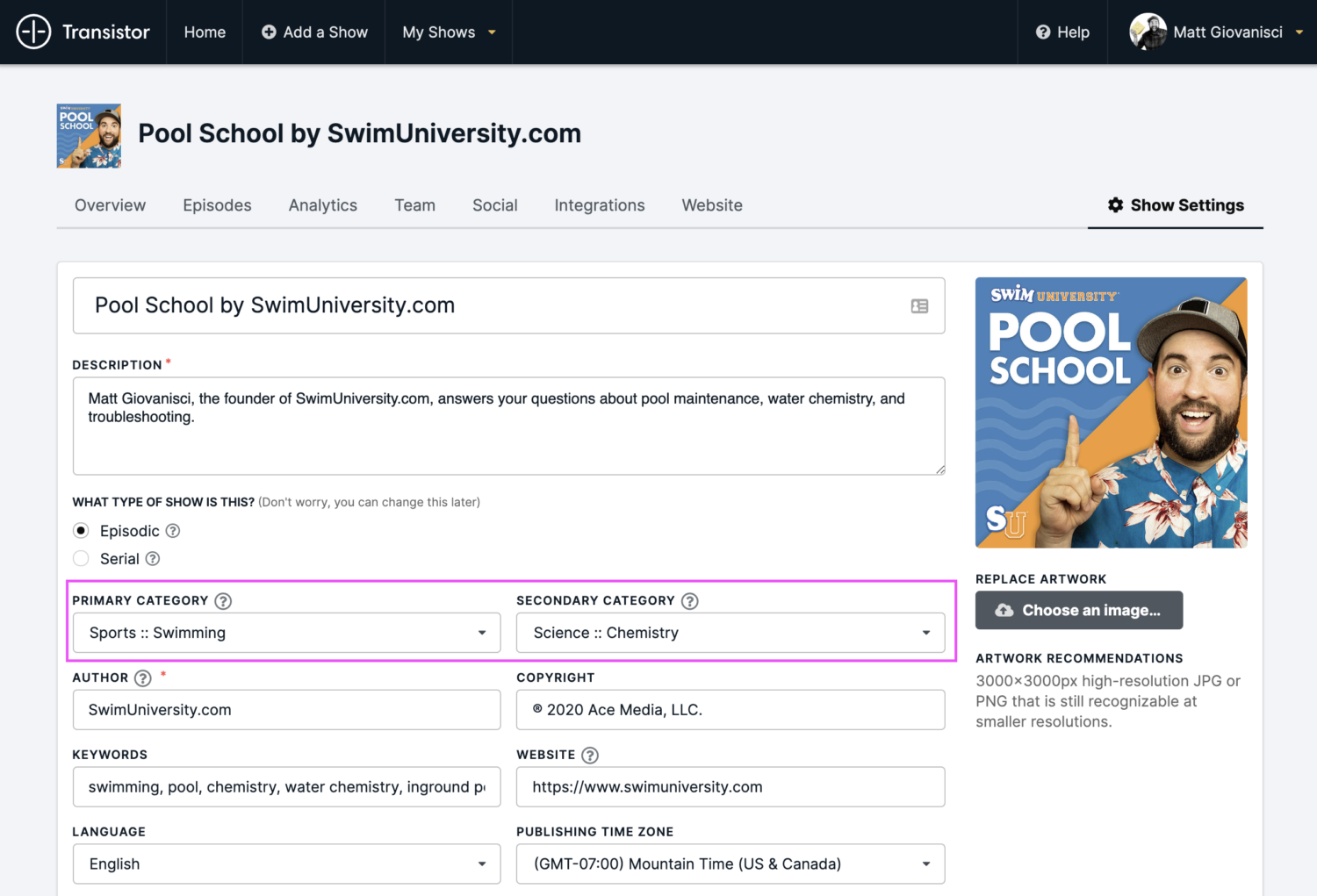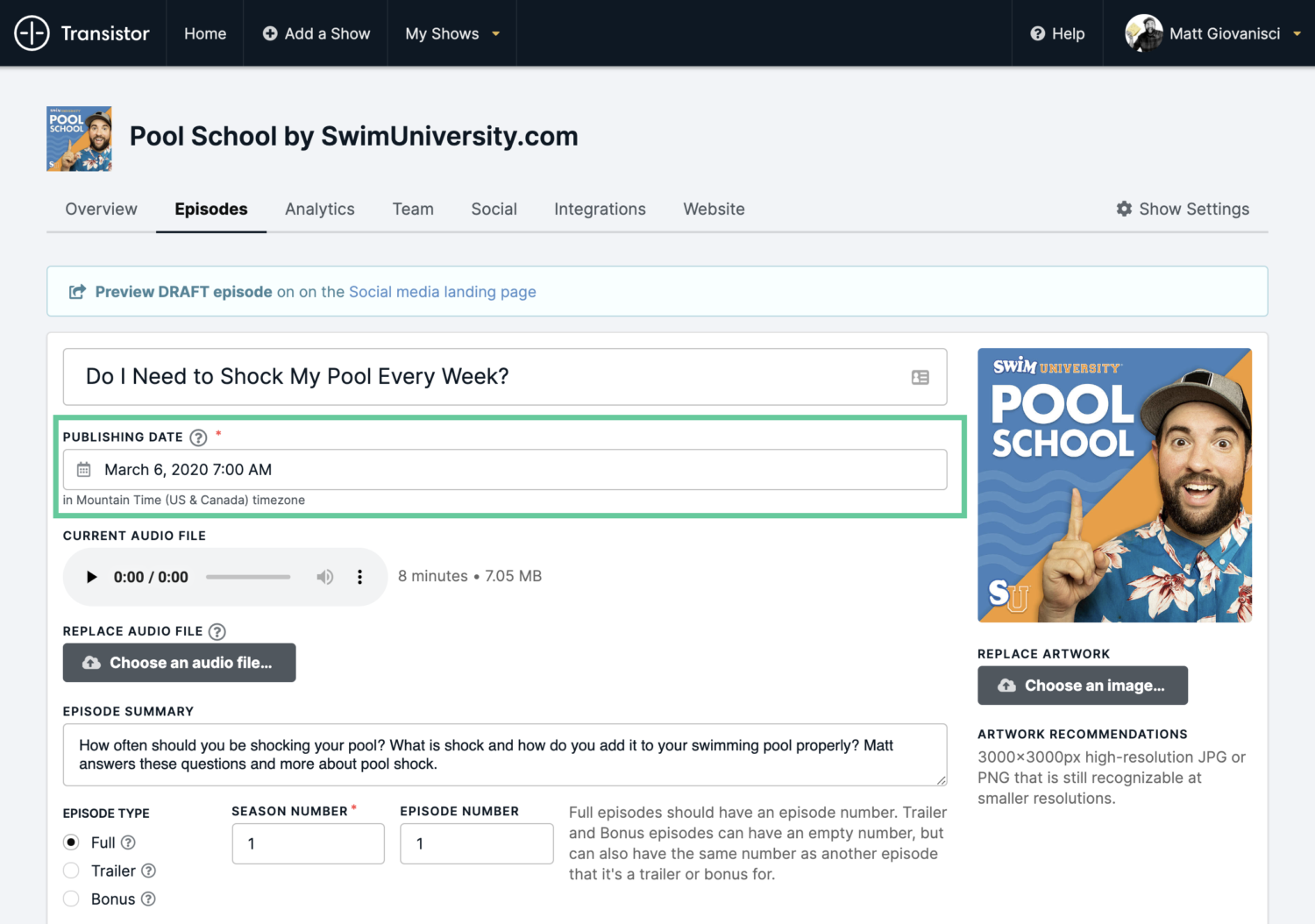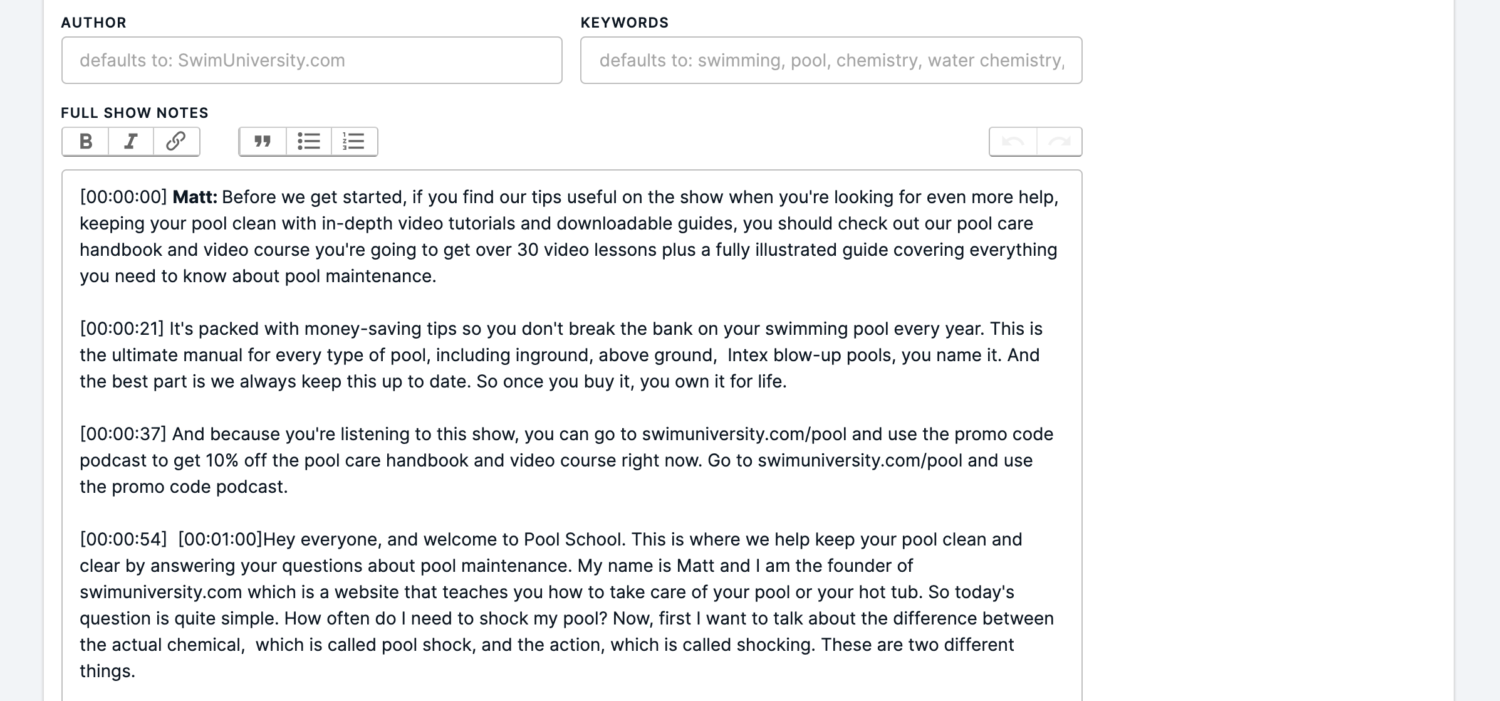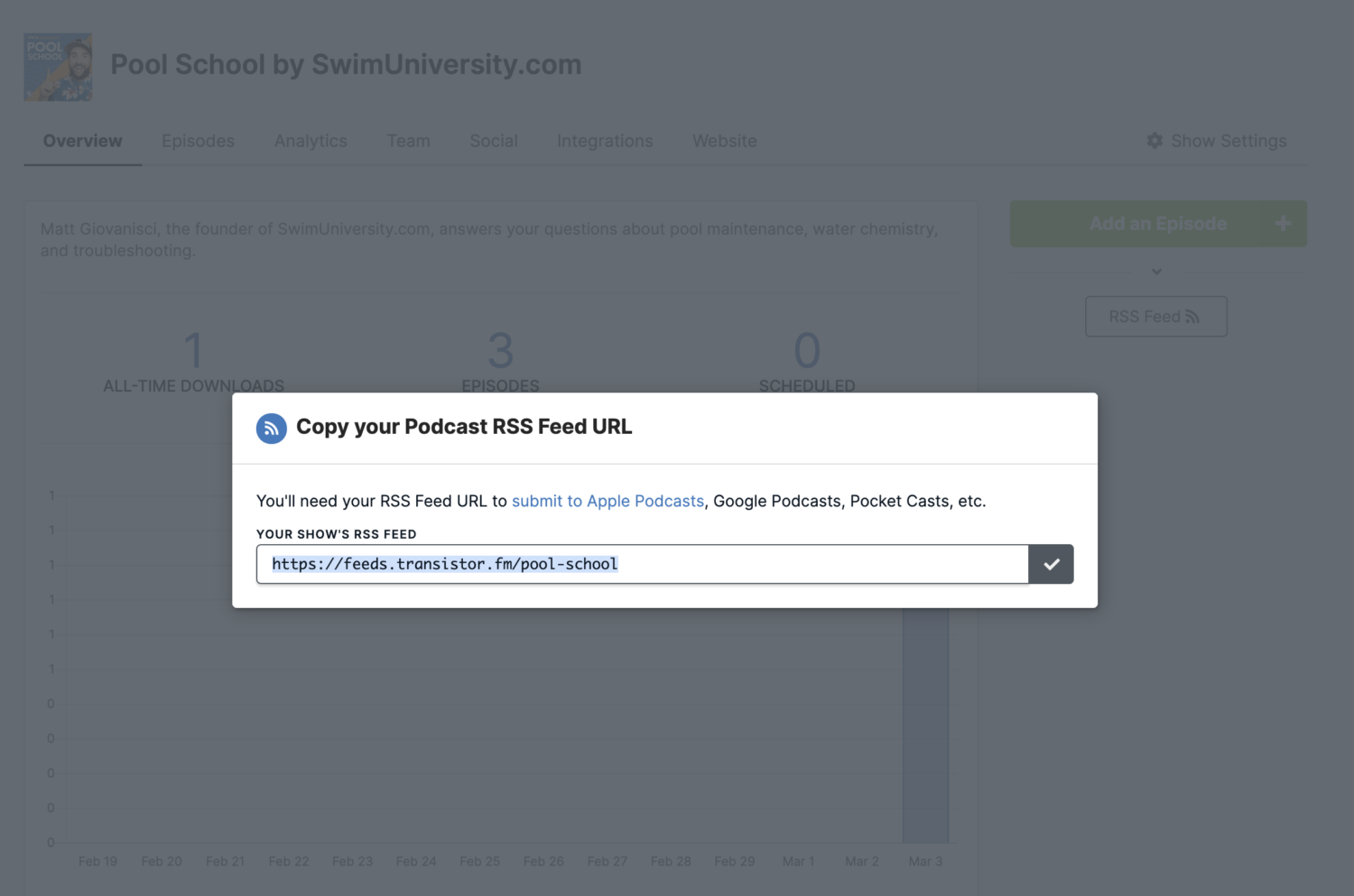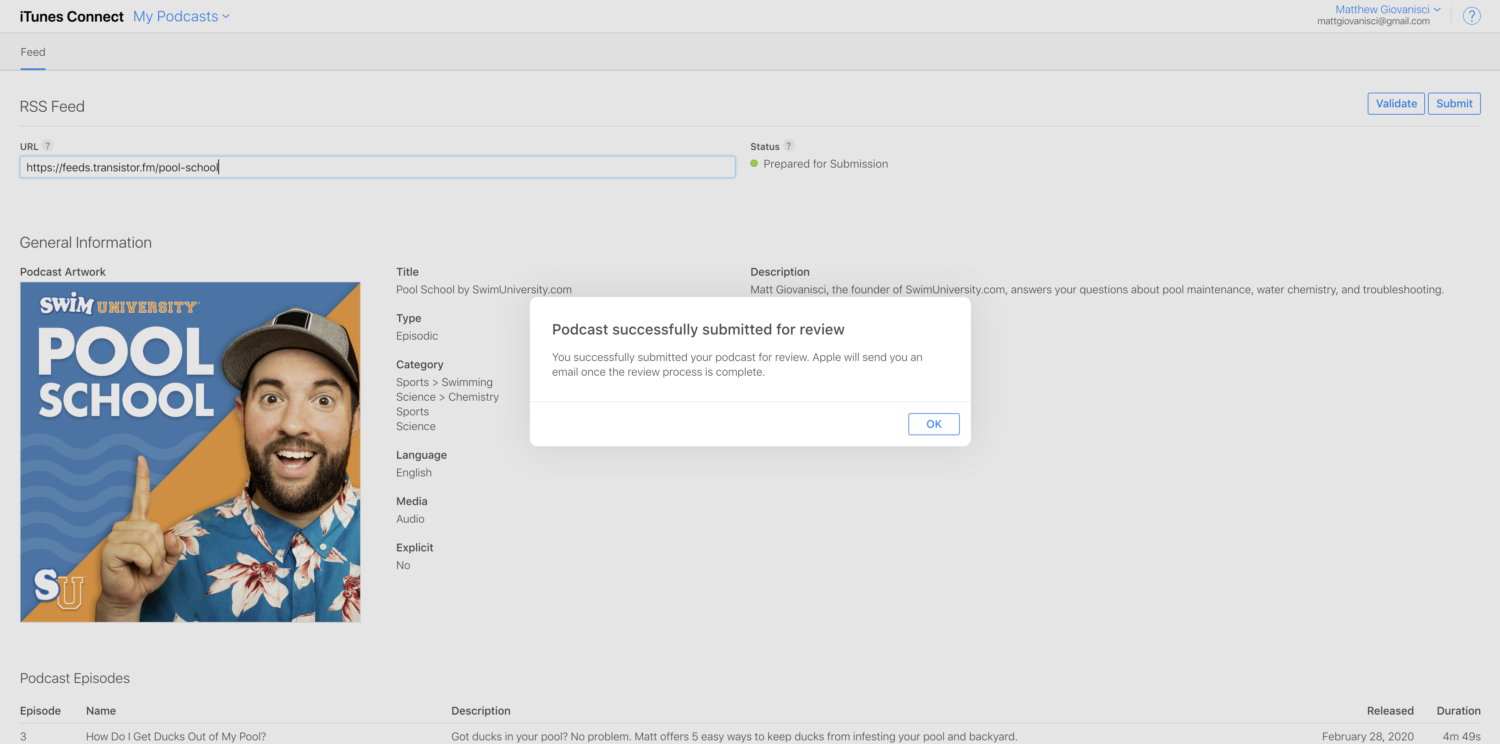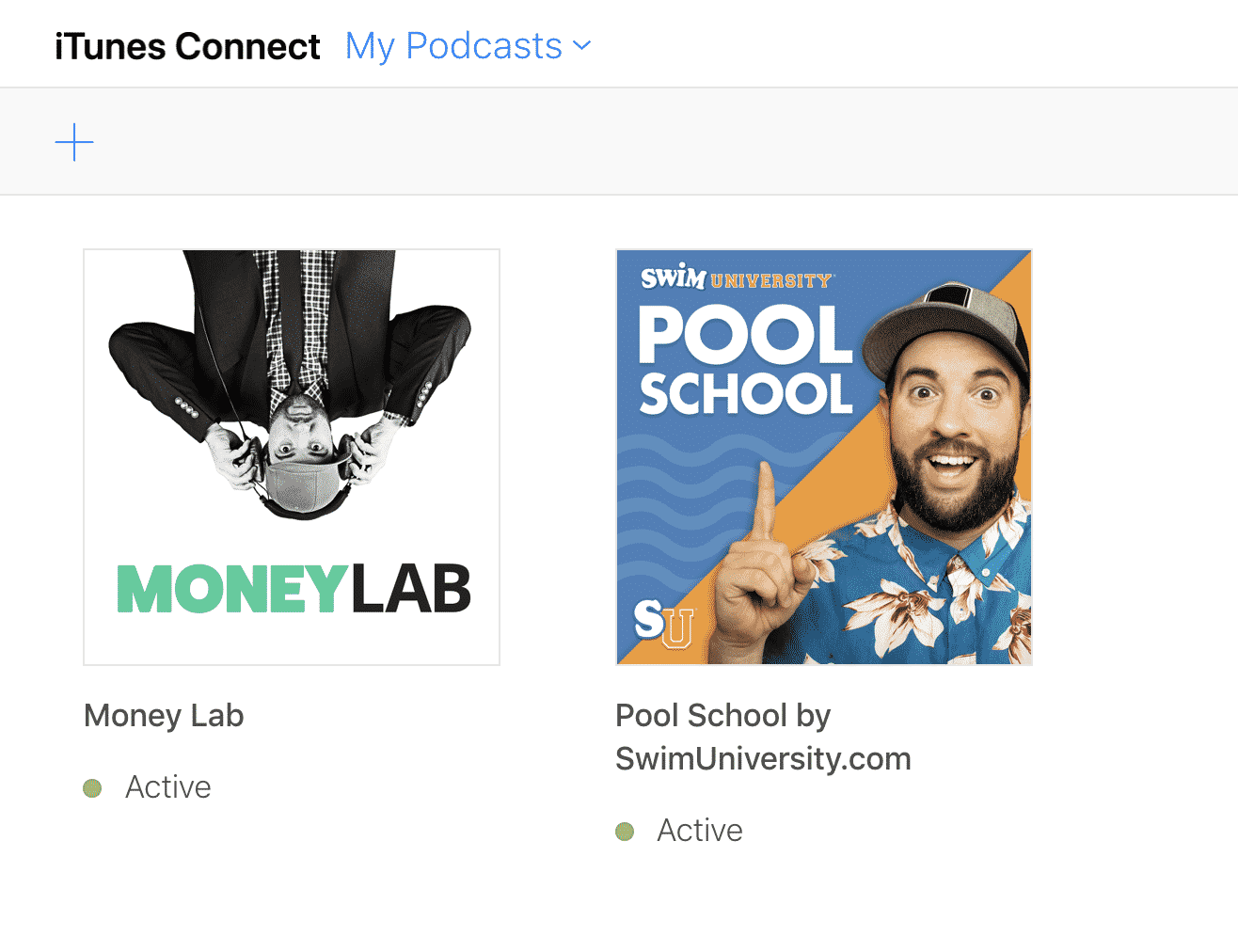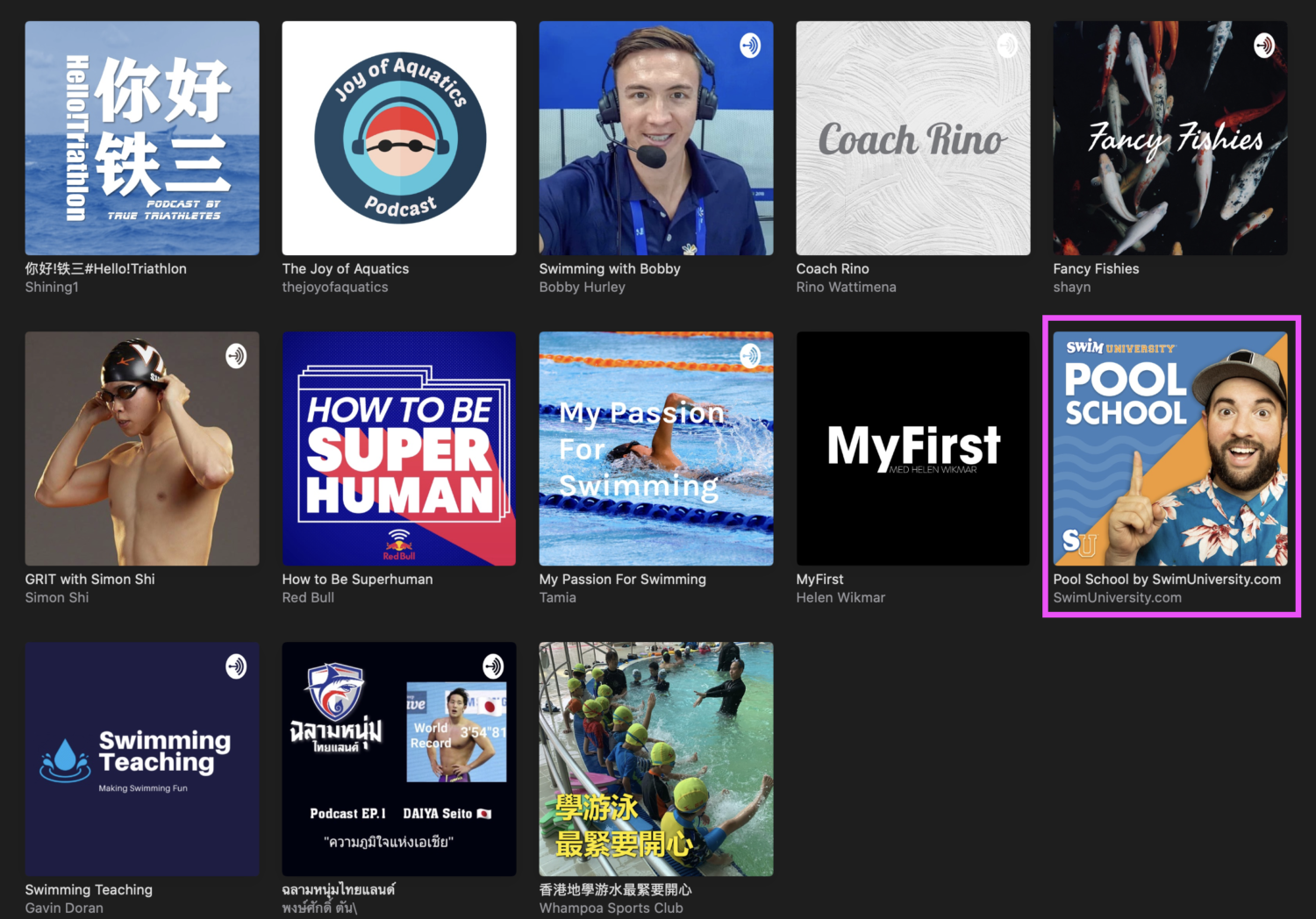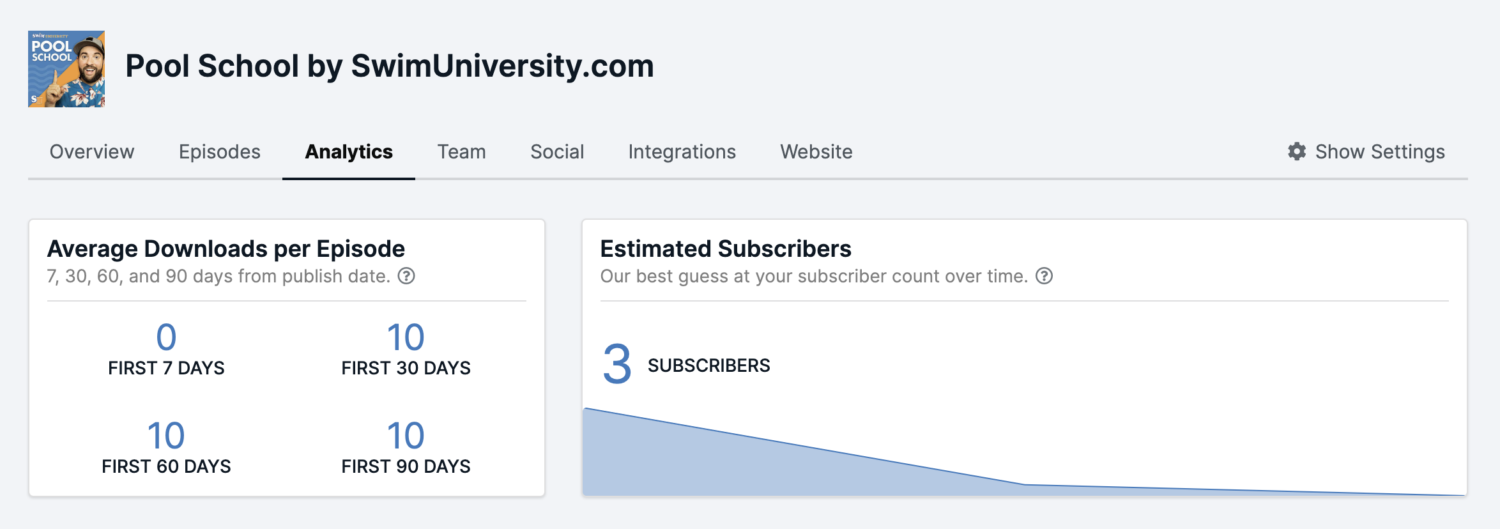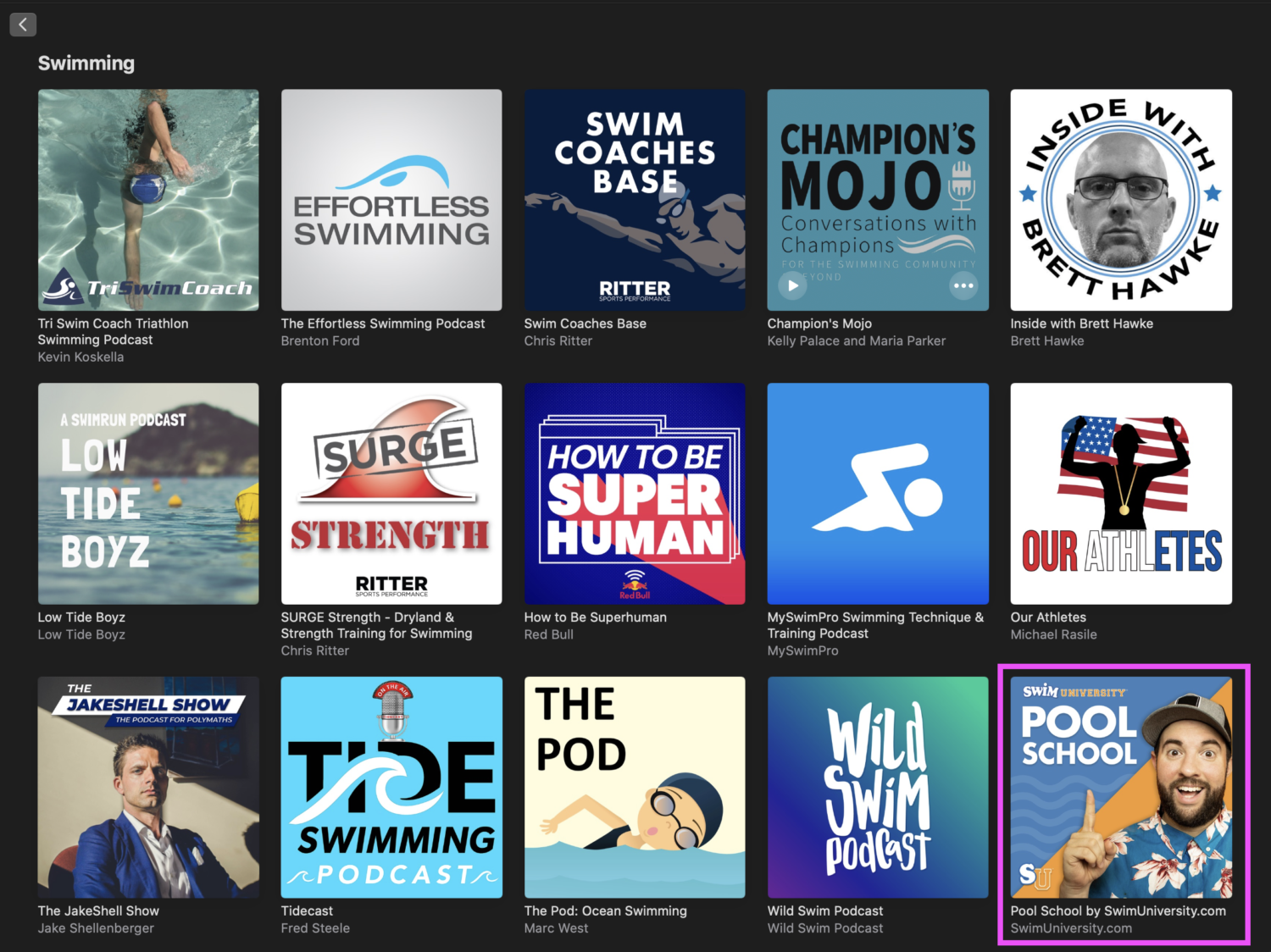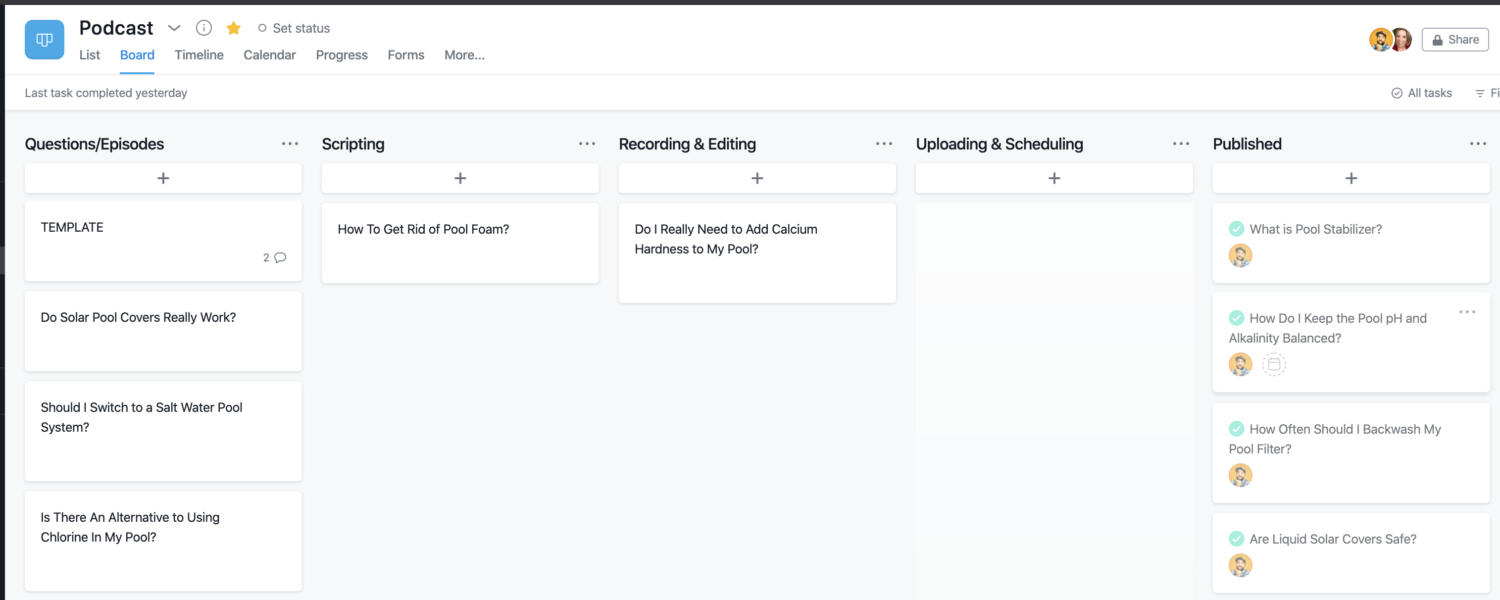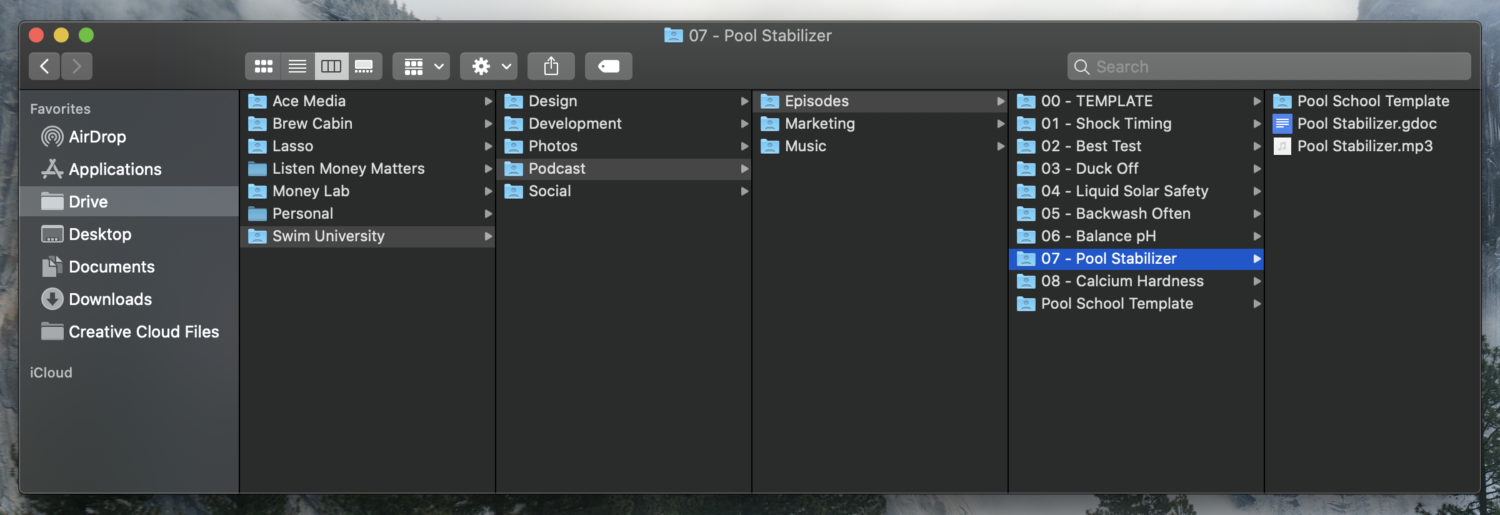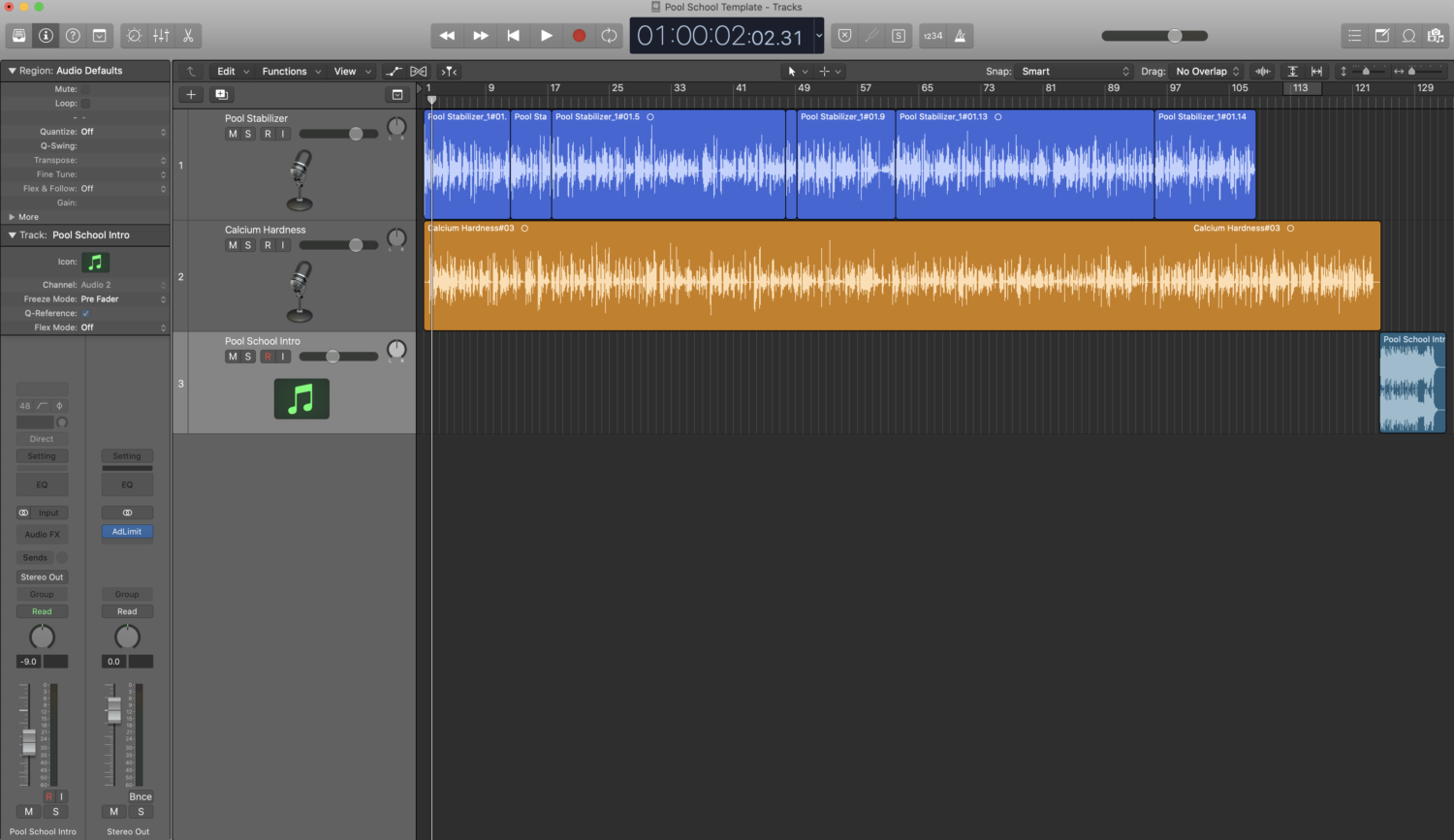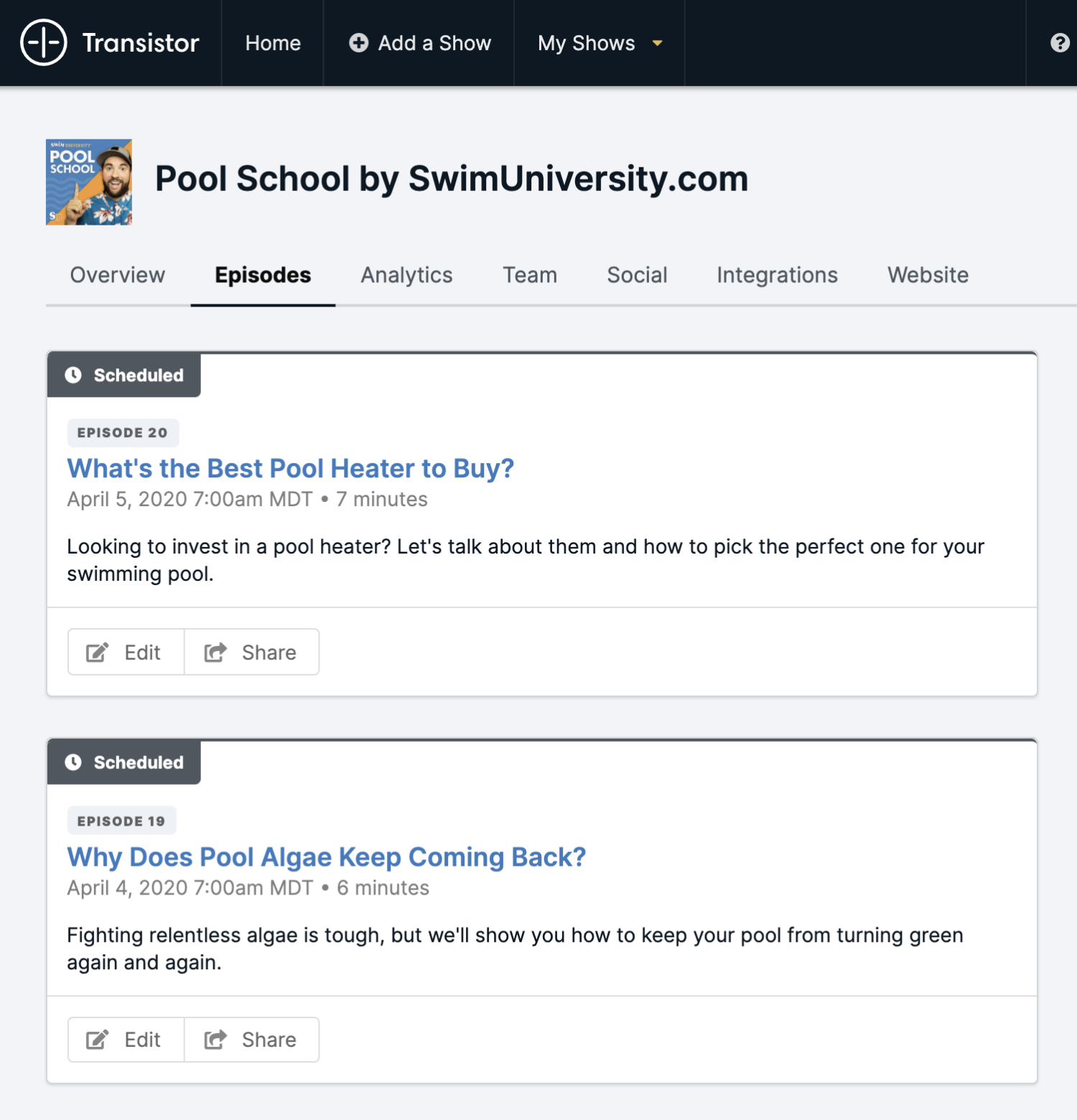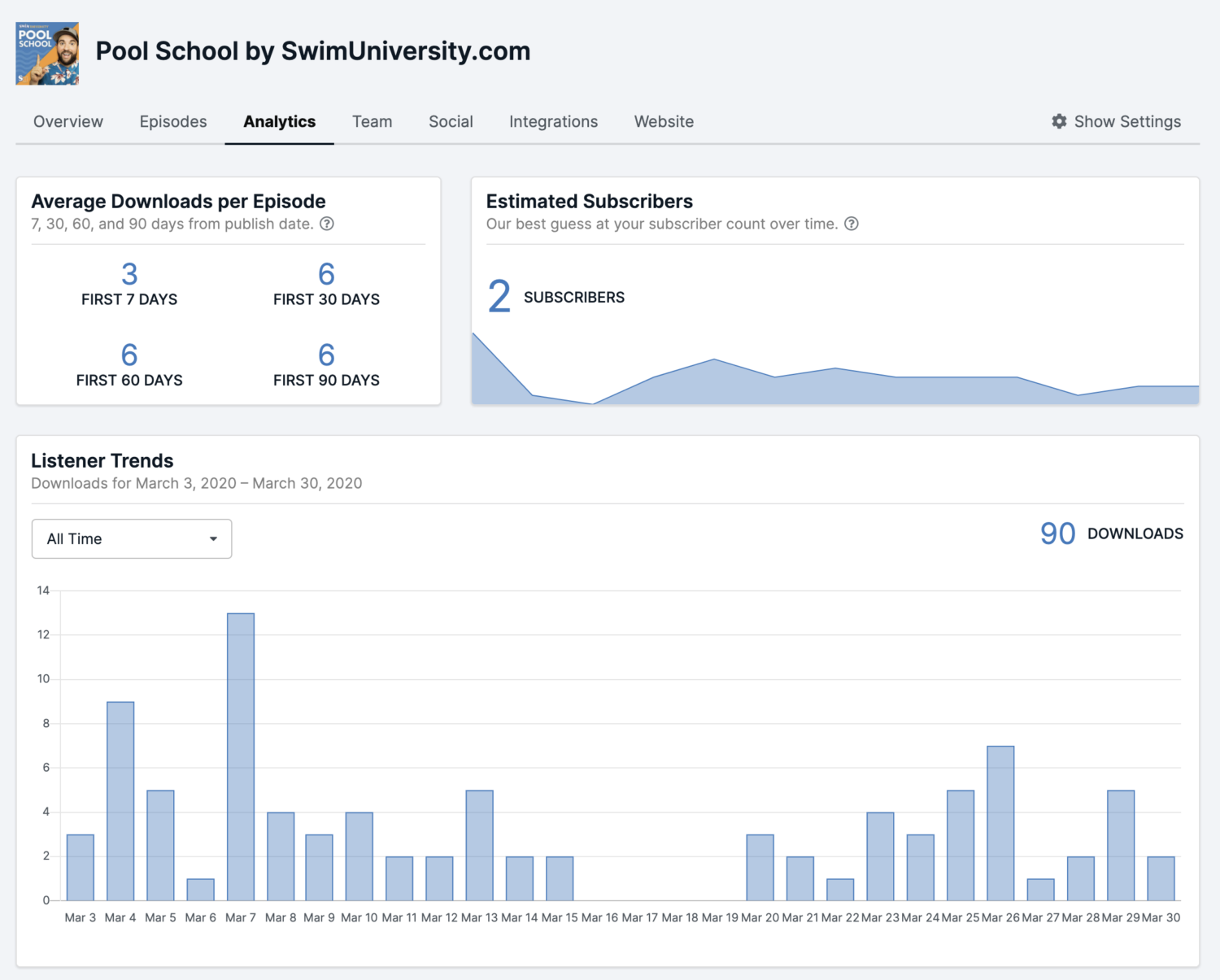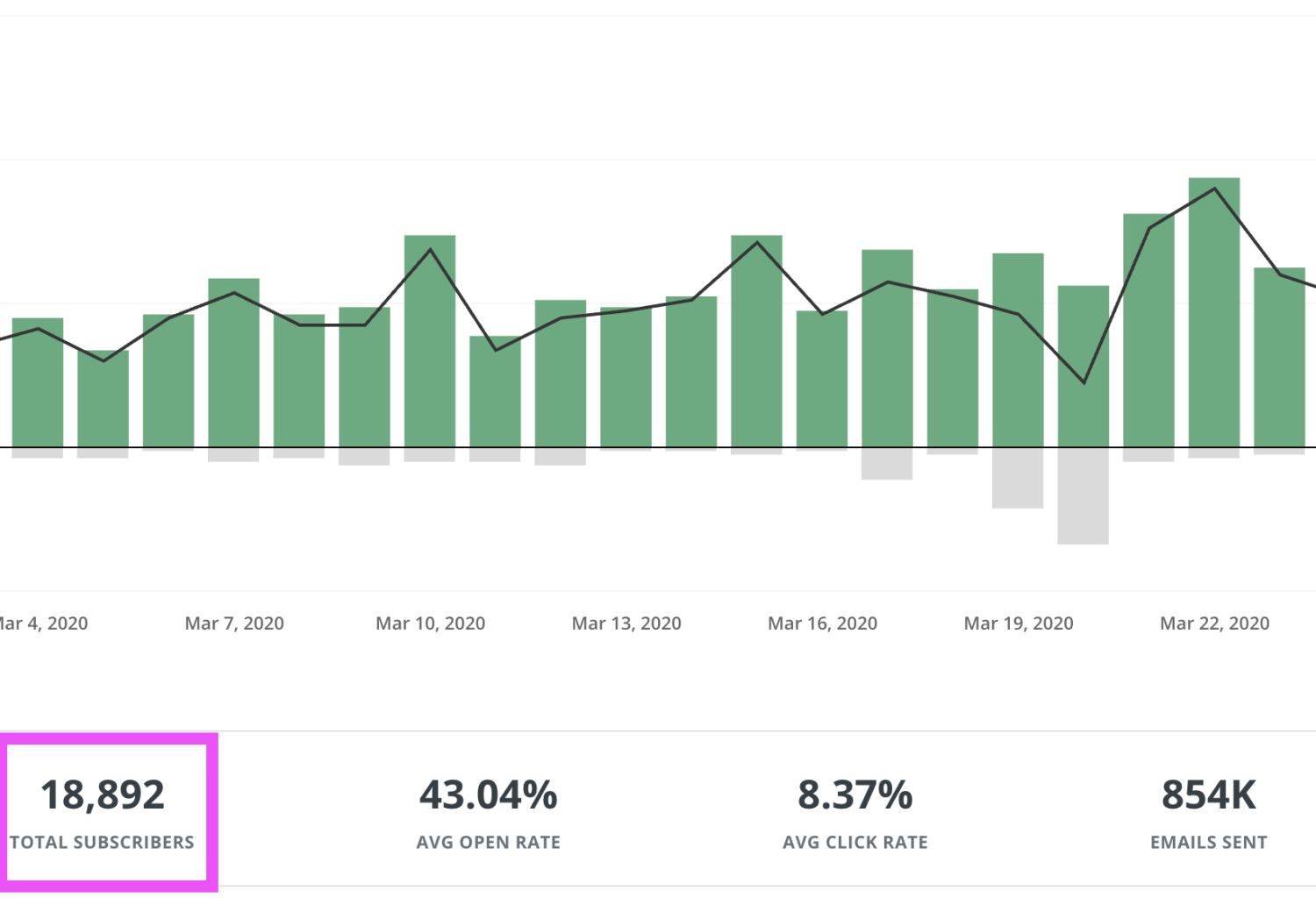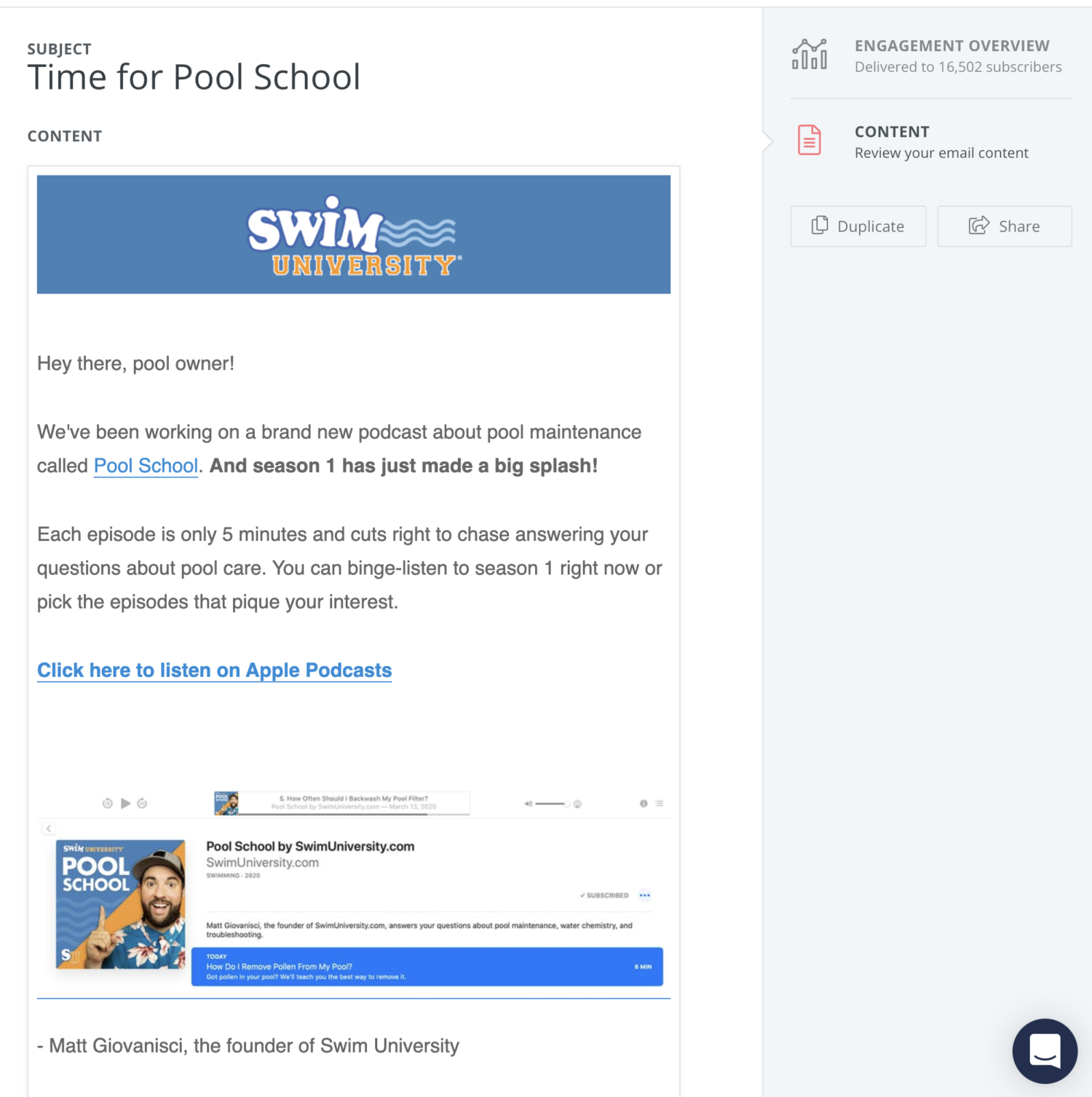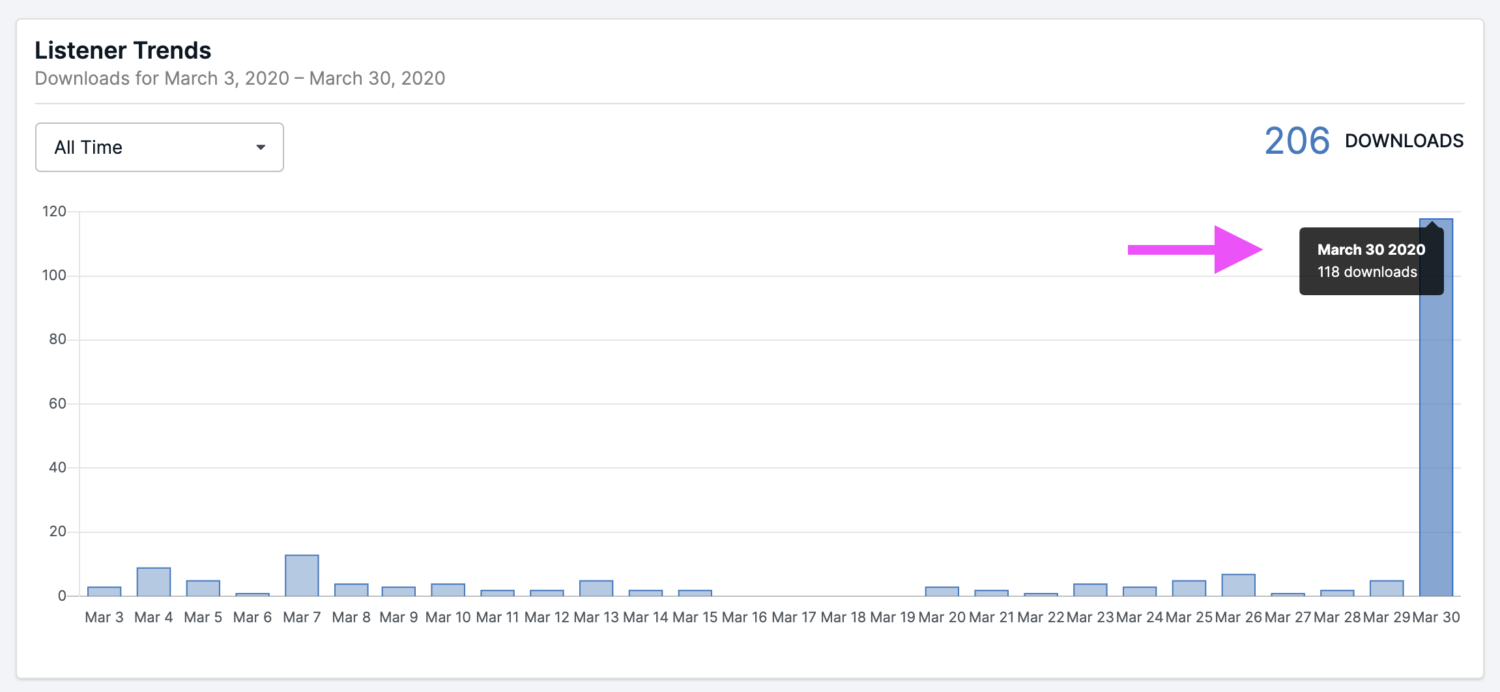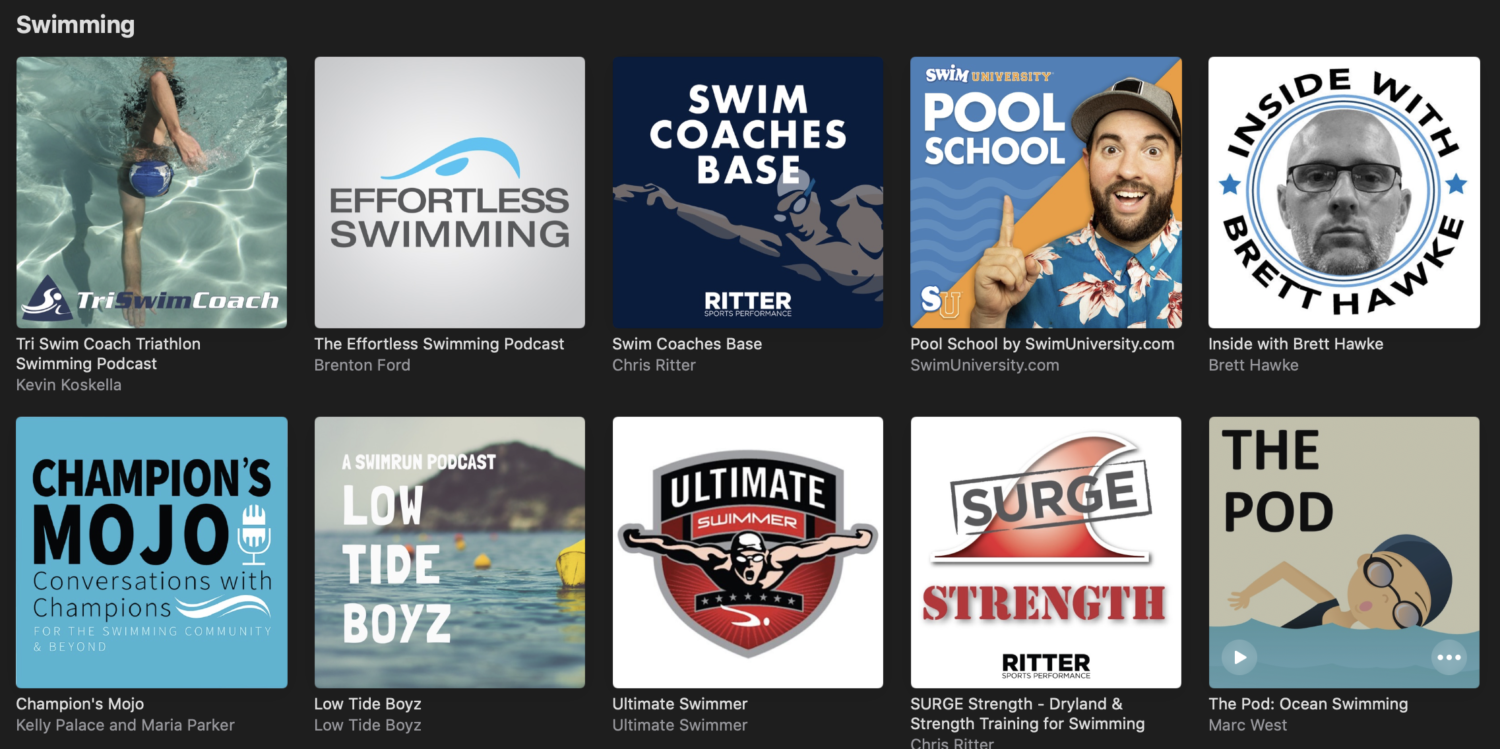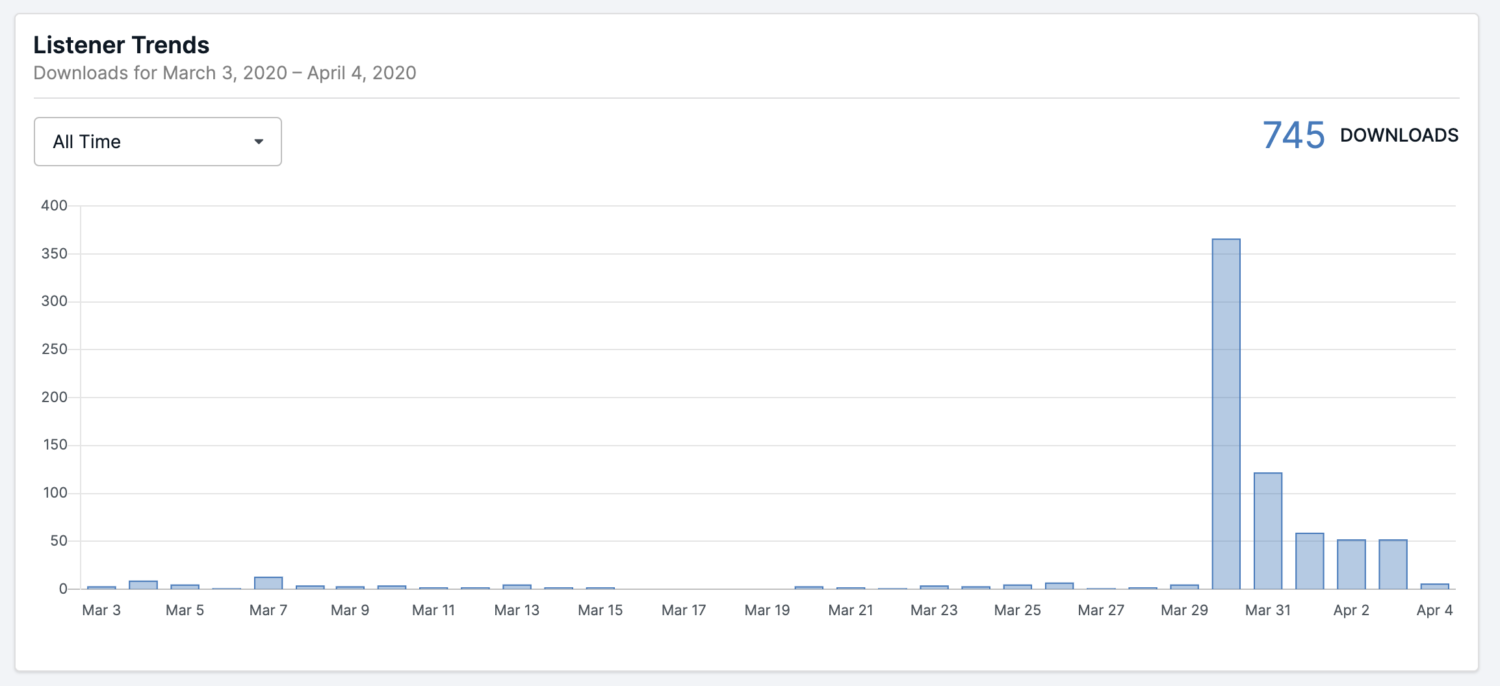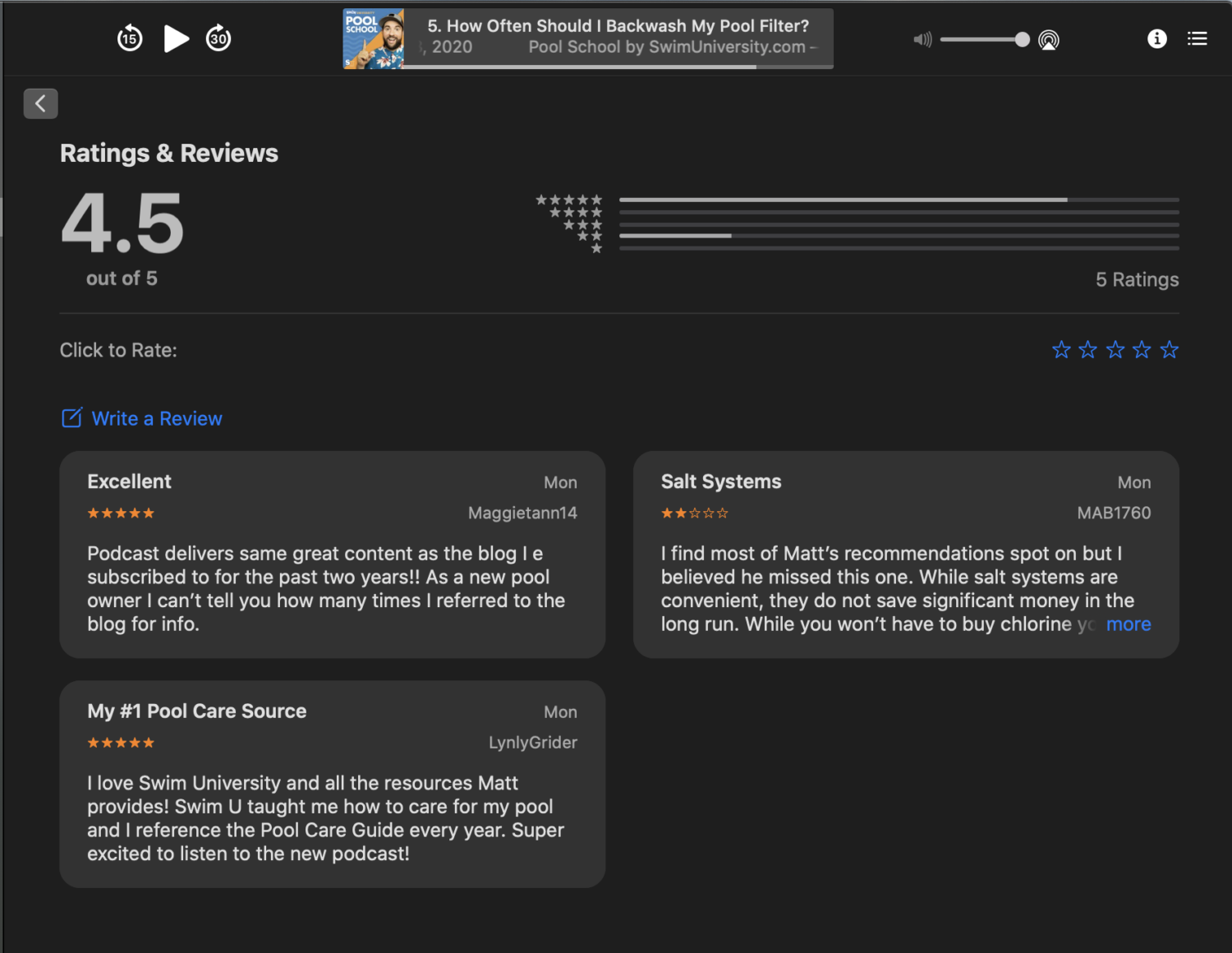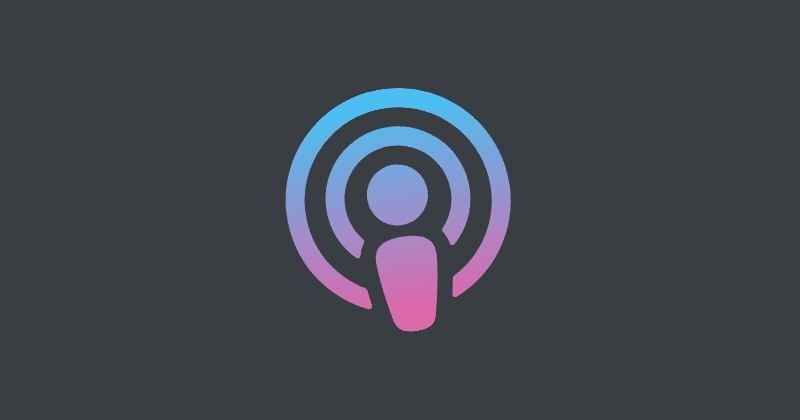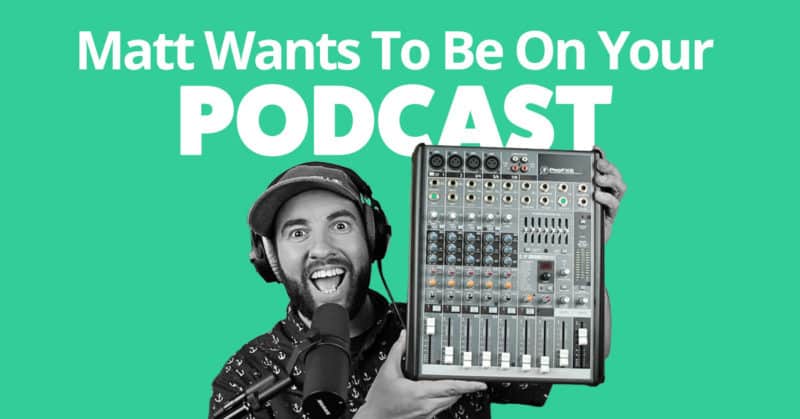Money Lab experiments are ongoing projects that don’t have to make money directly (but this one’s different). These are not true scientific experiments. I’m just testing a hypothesis to see if it has a meaningful impact on our selected key performance indicators.
I got a DM from Justin Jackson (co-founder of Transistor.fm) that piqued my interest. He knows I run SwimUniversity.com.
It was just a screenshot referencing this article on the Pacific Content blog.
Well, I thought on it. And this is my experiment to see if it’ll actually work.
The Hypothesis
Will a niche podcast in a category with low competition gain listeners, sell more products, and increase revenue?
This is the full quote from Dan Misener, Head of Audience Development at Pacific Content:
Among the the least crowded categories: several of the 2019 additions (
Science: Mathematics,Sports: Swimming, andScience: Chemistry). With a scant 14 shows on the Apple Podcasts US Swimming charts, it’s one of the least competitive categories to chart in.If you’re trying to decide between two different podcast categories, and both seem like a good fit content-wise… choose the less-crowded one.
I know the Swimming category in iTunes is geared towards the sport, but that will be my primary category. My secondary category could be Chemistry. So I’ll be able to hit two non-competitive categories at once!
I’m sure some of these listeners have pools that need maintenance, right?
Is anyone gonna listen to a podcast about pool maintenance? Does being in a non-competitive Apple Podcast category even matter? And even if both of those things are true, will people buy the product I promote?
I’ve already heard from a few close friends that this experiment won’t work. But if it does, it’ll be really fucking awesome. Plus, podcasting is kinda my thing, so it won’t take long to produce a good show. Even if it’s about pool maintenance.
In any case, I think this is an interesting experiment that could be an untapped resource for Swim University. Or it could fail miserably. Either way, I’m excited to find out!
The Key Performance Indicators (KPIs)
There are a couple of things I’d like to measure with this experiment.
- Listeners from Apple. To isolate the variable, I won’t promote the podcast on my website or my email list. All the listeners gained during this experiment will come from Apple Podcasts. That said, I’m also writing about it publically and it’ll affect the number of listeners. But it shouldn’t affect…
- Product Sales. I’m going to create a special coupon code for my Pool Care Handbook and Video Course and track how many customers use the code in Podia.
The Plan
I want to get this podcast published fast. I’m to use transistor.fm to make that happen. They’re not sponsoring this experiment. I’m doing it on my own. Justin is only responsible for putting this hypothesis in my head. I’m the crazy asshole who’s willing to launch a pool podcast.
I’m thinking the podcast could either be seasonal or one-and-done. I’ll obviously start with one season and take it from there. We’ll see what happens.
1. Design Podcast Cover Art in Adobe Photoshop and XD
I already have an idea in mind. I have a bunch of headshots I use for our YouTube thumbnails. So I’ll just pick one of those and make something quick.
I’m thinking the show will be called Pool School. And I could knock this out in about an hour.
2. Create an Editorial Calendar in Asana
First, I need to figure out what format the episodes will take. After talking with Justin again, I think an FAQ-style show is the way to go.
I doubt anyone would listen to a long-form podcast about pool care. Instead, they can choose the episodes that answer their questions.
I’d like to start with a few episodes ready to go; maybe two or three.
I’ll plan out a few episodes and build a board in Asana to track my workflow throughout the experiment. It should only take me an hour or so to set this up.
In case this experiment doesn’t work, I’m gonna stick to a seasonal format just in the summers.
3. Create 2 or 3 Episodes in Descript
I’ll create a few loose scripts for these episodes based on a master template. My goal is to keep the episodes short but packed full with info.
And just to throw myself a curveball because I’m a masochist, I’m gonna edit episodes with Descript: a software I’ve never used before. But I’ll give it a shot because why the hell not. (I’m a poet and I didn’t even know I was one).
To be honest, I’ve been dying to try this software ever since I saw their brilliant sales video. It’s a podcast editor that transcribes your audio, and then you edit the text, which actually edits the audio. It’s pretty slick. Watch the video. It’s funny too.
If I don’t like it or takes too long, I’ll switch back to my normal editing software: Logic Pro X.
As for music, I’m just gonna use the video theme song I wrote years ago.
The scripts will take me about two hours to make. Hopefully less. And recording and editing should take me about an hour an episode. So I’ll guess this process will take me about five hours total.
4. Add The Show to Transistor
I already have an account with Transistor. So all I have to do is create a new show, upload the cover, add some episodes, and obviously pick Swimming as my main category and Chemistry as my secondary one.
Note: There’s a Home and Garden category that has low competition. So I made make the switch to that category if this experiment is tanking. Perhaps that’ll save it.
It should be pretty easy and fast. Only an hour or less of work.
5. Submit The Feed to Apple Podcasts
Finally, I’ll submit the feed and start measuring and publishing results. This should only take me a few minutes.
My goal is to have this podcast launched before March 1st, 2020. The pool season doesn’t really start until May, but I think getting some episodes out there before the season kicks into high gear will be good.
I think I’ll have an answer to my hypothesis by April or May. If things are going well, meaning sales are being made with minimal effort, then I’ll continue for the rest of the season. Probably until the end of August.
I’m planning to publish weekly episodes, but again, we’ll see how that goes.
A podcasting course from Pete McPherson of DoYouEvenBlog.com.
Design Podcast Cover Art in Adobe Photoshop and XD
This took me way longer than I thought. I couldn’t decide if I should put my stupid face on the cover of the podcast. Or just keep it simple with text and a single graphic.
I tried so many options. I toiled over every iteration. But in the end, I decided to put my stupid face on the cover.
In Photoshop, I took a picture of myself from my headshot collection and cut it out from the orange background using the Select Subject feature in the Quick Selection Tool.
I imported that into Adobe XD to create the background, text, and logos with some slight drop shadows for separation.
I think it’ll stand out against the rest of the swimming podcasts in the category.
Create an Editorial Calendar in Asana and Master Episode Template
I put together my Episode template. I start with the ad read, then theme music, then show intro, then question, answer, and finally the outro. Pretty straight forward.
I also created a board in Asana and some columns/steps that’ll be my rough workflow:
- Questions/Episodes: I’ll use this to create and store a list of questions I want to do episodes on. For now, I’ll just create some basic questions that I know off the top of my head. In the near future, I’ll start collecting actual questions from readers.
- Scripting: In this stage, I’ll but writing the basic bullet points I want to cover for my answer.
- Recording/Editing/Uploading: After the script is finished and moved to this column, I’ll do all the recording editing at the same time in Descript, and upload it to Transistor all in one shot. If this gets overwhelming, I may split uploading into a new Column.
- Published: Once the show has been uploaded to Transistor, I’ll mark the card as complete and move it to this column.
Creating The First Episode Using Descript
I picked the topic for my first episode and quickly threw together a script. The episode is titled “Do I Need to Shock My Pool Every Week?” I used the script template I created and just added some bullet points to the Content section of my outline.
My plan is to riff on the main content of the episode. The bullet points are the topics I want to cover. Once it’s recorded, I’ll use Descript to edit out all the filler words and bad riffs.
I created a card in Asana, attached a link to the Google Drive folder that contains the script, and moved the card to the Recording/Editing/Uploading column.
I’m recording the audio with my normal podcasting setup, which is a bit advanced. You can read more about it here.
I’m using a Shure SM7B microphone attached to a Heil boom arm and connected to my podcasting stack.
The podcast audio stack includes:
- dbx 286s Microphone Preamp/Processor: This adds a real-time compressor, desser, limiter, and noise gate on the mic so it sounds perfect before going into the Scarlett.
- Scarlett 18i20 Audio Interface: this allows me to send the audio into the computer via USB.
I’ll admit, this is overkill. I’m building out a podcast studio with multiple mics, which is the reason I have all this equipment. It’s also for music production.
The easier way to do this is to just plug in my Audio Technica ATR-2100 (which they apparently discontinued for the new ATR-2100x).
The easiest and BEST microphone for podcasting. I use this mic when I travel. Easy to set up and always sounds perfect.
Recording and Editing The First Episode With Descript
I’m recording and editing the first episode using Descript. I’ve never used this software before. I want to try it because it transcribes the audio into text and then you edit the text, which edits the audio. Pretty brilliant!
This will allow me to quickly edit out my “ums” and “likes.” Plus, I’ll be able to read through what I said and remove anything that isn’t accurate or doesn’t make sense.
On top of all that, I now have a transcript of the podcast I can add to the show notes. This might help add metadata for people searching for pool care podcasts.
Descript is free to use for up to three hours of audio. After that, I’ll have to pay for it if I continue to use it.
Uploading The First Episode to Transistor
First, I created a new show in Transistor for the Pool School podcast. I uploaded the cover art, wrote a description, chose the categories, and added a bunch of keywords.
In the advanced settings of the show, I also allowed the show to be seasonal and changed the feed URL.
Now the show is created, I can upload the first episode. I have both the MP3 and the entire text transcript exported from Descript. I’ll use these to create the episode.
I’ve also decided to publish new episodes on Fridays because people can listen to the episode right before the weekend when they actually use and take care of their pool.
The episode summary I’ll keep short. And below that is the full show notes where I copy and pasted the entire transcript of the episode.
Ok, the first episode is ready to go. Next, I’m going to create just a few more episodes and then submit the show to Apple Podcasts.
Meanwhile, you can listen to the first full (but short) episode:
Submitting The Feed to Apple Podcasts
I’ve recorded three episodes with Descript and uploaded them to Transistor. Now I’m ready to submit the RSS feed to Apple.
First, I got my feed URL from Transistor.
Then, I submitted it to Apple Podcasts Connect. I already have an account because of the Money Lab podcast. All I had to do was submit the feed URL, which was successful.
Now, I wait.
The First Few Days in Apple Podcasts
After submitting the feed to Apple Podcasts, it took about 4-5 days for them to review and approve. I had to keep checking on itunesconnect.apple.com because they never sent me an approval email.
I checked every day. Then, this happened.
It now says “Active” where it used to say “Under Review.”
I immediately checked Apple Podcasts to see where I ranked under the Swimming category. Turns out, on the very first day with no promotion, I was ranked 35th in the category.
Ok, that’s pretty sweet. But the real measurement of success is the audience size and revenue from that audience.
According to Transistor‘s analytics, I have 3 new subscribers. And I’m not included in that.
But still, no one has used the coupon code I set up in Podia to buy the product I’m promoting in the show. BTW, I use Podia to sell my digital products for Swim University just like I do here at Money Lab.
Everything you need to sell online courses, downloads, and memberships without worrying about the tech. This is what I use to host all my online courses.
And I’m not surprised by that at all. The audience isn’t big enough.
Day Two On Apple Podcasts
The most surprising thing that’s happened so far is the huge bump in rank. This is only my second day on the Apple Podcasts platform and the show jumped from 35th to 15th in rank.
Zero promotion, no new subscribers, and only a handful of downloads.
My gut tells me that no real pool owners have found this show yet. The downloads are probably from curious people like you reading this post. Am I right?
The next step in this experiment is to produce and schedule a batch of new episodes. And I’ll keep an eye on the ranking, subscribers/downloads, and coupon uses to report on this post.
I’m not gonna promote this podcast to my existing audience at Swim University. This would ruin the experiment. I want to find out if ranking on Apple Podcast alone will gain me an audience and lead to product sales. This could be a whole new marketing channel for the brand. Or it could fail miserably.
Stay tuned.
Well, That Didn’t Work. Let’s Keep Trying!
It’s been two weeks since launching the podcast. And so far, the stats look…weak.
Very weak.
- All-time downloads: 58
- Estimated subscribers: 4
- Coupon uses: 0
- Apple Podcasts Rank: #22
- Revenue: $0.00
I had a feeling this would happen. Apple Podcasts is a terrible discovery engine unless you’re featured.
The podcast will remain the “Swimming” category until the end of the experiment. But I changed the secondary category from “Chemistry” to “Home & Garden.” This is a better fit, but it doesn’t rank at all.
I could chalk this experiment up as a failure. But I have two more things I want to try.
- Phase One: Ranking on Apple Podcasts
- Phase Two: Publishing Daily For Two Weeks
- Phase Three: Emailing The List
For two weeks, I’m publishing daily episodes to see if it’ll boost rankings and result in more sales. If I’m being honest, I don’t think it will, but I’d be damned if I didn’t try.
Then, once that phase is over, we move onto phase three where I just promote the podcast to my email list of 15,000 pool owners and see if any sales are made.
Once we’ve gotten through all three phases, the month-long experiment will be over and I’ll decide if it’s worth keeping the podcast. It must be able to sustain itself in order for me to continue producing episodes.
I figure it will cost me a little over $500 a month to produce new episodes every week, if not more. So the podcast has to at least make that much for two months in a row for it to be sustainable.
Promoting the podcast once to my list may result in some sales, but it needs to happen again the following month without promotion. And, I don’t think it will and I’ll shut down the podcast.
But I’m giving it a fighting chance. I would love to be proven wrong.
Phase Two: Daily Episodes
I’m bulk-producing 14 new podcast episodes and scheduling them in Transistor to publish every day for two weeks. But I’m also making some changes to my process.
First, I’m not going to use Descript to edit my episodes. While I like the software, it just takes way to long to edit. Instead, I’m going to record directly into Logic Pro and only do some minor editing before exporting.
Second, I’m going to get right into the content and put the ad read at the end of the episode instead of the beginning. My gut tells me this repetitive pre-roll ad is turning people off from the show.
The pre-roll is a minute long and the entire show is roughly five minutes. So 1/5th of the show is ads. That sucks.
The New Podcast WorkFlow and Episode Structure
I scripted, recorded, edited, and uploaded a single episode in one fell swoop to test the workflow. Now that I know what it’ll take, I’m going to bulk create in each step.
First, I’m going to script all 14 episodes using Google Docs and organizing in folders. I’m also changing the format of these episodes by removing the pre-roll and theme music from the beginning and sticking the ad at the end.
The New Script:
- Show Introduction
- Pool Question
- Answer
- Ad Read
- Show Outro
- Theme Music
Next, I’m going to record every episode directly into a single Logic Pro project so I don’t duplicate my work and my theme music is always available.
Once I’m done recording a single episode, I’ll do a quick edit and export.
Finally, once I have all 14 MP3s, I’m going to bulk schedule them into Transistor to publish for the next two weeks.
From there, I’ll keep an eye on the stats to see if my numbers improve.
After One Week of Daily Episodes
It’s now been three weeks since launching the podcast and one week of publishing daily episodes. And so far, the stats look fucking awful.
- All-time downloads: 90 (up from 58)
- Estimated subscribers: 2 (down by 4)
- Coupon uses: 0 (same)
- Apple Podcasts Rank: #27 (down from #22)
- Revenue: $0.00 (same)
It seems like publishing frequently did not help my ranking or any other stat for that matter. There are still 7 more episodes that will publish in the coming week. So time to move to the final phase.
Phase Three: Emailing The List
If this doesn’t work, then the experiment is over. But I’m still gonna keep the podcast alive and move it to the “Home & Garden” category.
I worked on producing all these episodes and podcasting hosting is already baked into my operating costs.
I’m gonna send an email to the Swim University list promoting the show. As of writing this, there are 18,892 total subscribers, but I’m only sending it to the 16,501 pool owners on the list.
Pool School Promotional Email
I sent the first and ONLY promotional email for this podcast.
The goal here is that my list will boost downloads and add some reviews. That may increase rankings in Apple Podcasts.
And some of them may even buy the product via the promo code.
But in order for me to do another season of this show, it must earn as least two months of consistent revenue after this experiment of about $500 or more a month.
This is what happens when you email your list.
I’ll wait another week after all the episodes drop and season 1 is over to report on what happened. Stay tuned and subscribe for more updates.
One Week After Emailing The List
It’s been four weeks since the start of this experiment. There are now 20 episodes published. My big list of pool owners has been emailed. And the stats are “up.”
- All-time downloads: 745 (up from 90)
- Estimated subscribers: 35 (up from 2)
- Coupon uses: 1 (up from 0)
- Apple Podcasts Rank: #4 (up from #27)
- Revenue: $44.10 (up from $0.00)
It looks like getting a bunch of downloads very quickly increases your rank in Apple Podcasts. This is why you need an existing audience already to have a successful podcast on Apple. Ranked #4 after emailing the list.
But it looks like that’s not helping. In fact, after the initial email and a bunch of downloads, no one really subscribed.
Remember, during this graph new episodes are still being published. Only getting about 35 downloads a day, which means there are only about 35 subscribers.
I did get a few reviews though that may have helped the show in ranking. But of course, I had to get one 2-Star review out of three. And that review was based on only one episode.
Fuck me, right?
Oh, you like my recommendations but not THAT ONE! So you give me 2 stars for the whole fucking show?!
Ok, sorry. I’m getting worked up. Shake it off.
The Final Recap
To be fair, this was a fun experiment. I knew from the beginning it would probably fail. But if it worked, I would have been on to something.
I’m glad I did it. Podcasting is my wheelhouse and there was good research done to indicate this might work. I also got to have some fun with it by using new software and creating graphics.
But in the end, it was still a failure.
How Much Money Did I Make?
I made $44.10. Minus the PayPal fees ($1.58) and I actually made $42.52
That was from a single coupon code.
Oh well.
What I Learned From This Experiment
Apple is a terrible discovery engine for podcasts. Tell me something I don’t know. But it’s really terrible. You need an existing audience to have a successful show.
But maybe there are other platforms that are better. Spotify?
I also learned that SwimU doesn’t need a podcast. I don’t know if I mentioned this earlier in the experiment, but I already tried this before. Back in 2010, I did a 15 episode podcast where I interviewed people in the pool industry. It was bad and didn’t work at all.
Should’ve remembered that LOL.
Needless to say, I won’t be producing any new episodes of Pool School. However, I’ll keep the podcast live for the rest of the summer and submit it to a few more directories. Who knows? Maybe it’ll bring in a few sales.
All that said, I still think podcasting is awesome. I think it really develops a strong relationship with my audience. It may not be a good marketing channel, but it feels like a good nurturing one.
Thank You
I need to thank Justin Jackson for giving me the idea. If you wanna start a podcast, I highly recommend hosting with Transistor. It’s rock-solid software.
I want to thank Andrew Fiebert, for constantly reminding me that this experiment would be a failure. I know, Andrew, you’re always right 😉.
Thanks to Steph, my beautiful and supportive girlfriend for just putting up with me during these experiments and challenges.
And finally, thanks to everyone who reads this! The mere fact that you’re reading these experiments makes the painful art of writing so much easier.
Peach out 🍑
